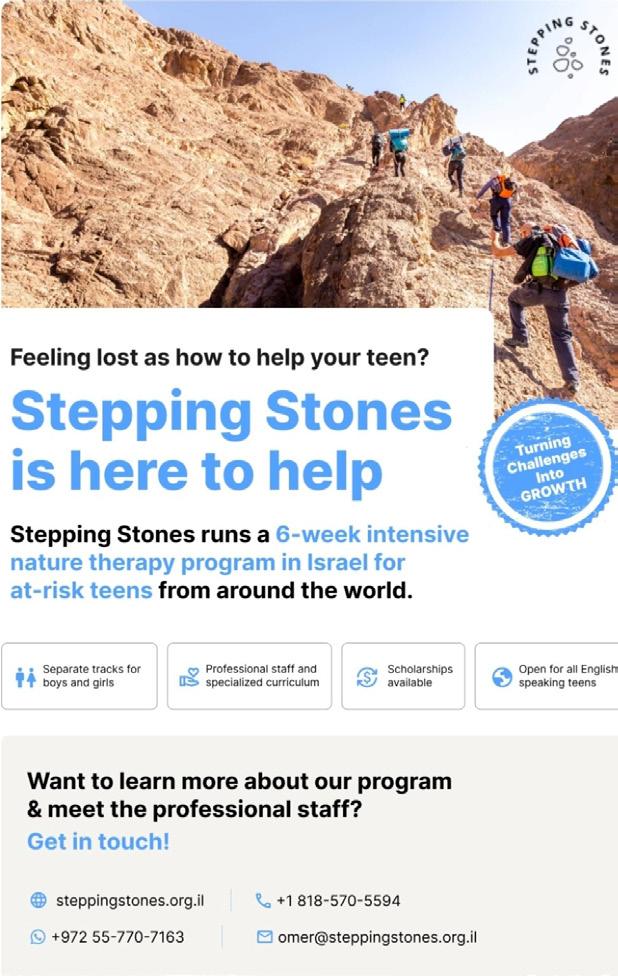




Deep Rooted Lessons Learned from Trees
Jen Airley Page 48

OU









Deep Rooted Lessons Learned from Trees
Jen Airley Page 48

OU



Dear
Rabbi
The Song of the Sea and the Complexity of Joy
Rabbi Moshe Hauer
Aliya-by-Aliya Sedra
Rabbi Reuven
Song and Spirituality
Rabbi Dr. Tzvi Hersh Weinreb
Music, Language of
Rabbi Lord Jonathan Sacks zt"l
Probing the Prophets
Rabbi Nachman
Terumot and
B’shvat:
Mrs. Leah Feinberg
Tu B’shvat 5785: The Seeking is the Finding Shoshana
Tu B’shvat: New Year’s Resolutions on the New Year for Trees
Rakel Berenbaum
Simchat Shmuel
Rabbi Sam Shor
Beshalach: The 80%
Rabbi Moshe Taragin
Shiras Devorah: The Song That Echoes Forward
Rebbetzin Dr. Adina Shmidman
Rav Kook: Galut and Geula
Rabbi Aaron Goldscheider
Fundamental Questions about Lifnei Iver
Rabbi Daniel Mann
Shagririm Balev Aleeza Ben Shalom
The Y-Files Comic
Epstein
Torah 4 Teens by Teens
Rabbi Yosef Ginsberg // Daniella Goldfarb
Photographed by Asher Kassel

I made aliyah from South Africa in 1974 and have lived in Rehovot for about 32 years. Rehovot used to be known for its many orange trees but most have been uprooted and replaced by hi-tech, the modern version of “industree”. We read the following in Shemot 22:11: יתנטק םידיסחה לכמ.These words have become part of a popular song by Yonatan Razel. I noticed that when the trees on Rechov Herzl, Rehovot, were trimmed by the iriya (made smaller, יתנוטק), they were pruned to have a “shtreimel”, like chassidim. I do not know the name of the “branch” manager who trims trees, but he must be a chassid.
KIDDUSH LEVANA: 7 Days After Molad: 8 Shvat/ Wed. night Feb. 5
Last Opportunity to Say Kiddush Levana Until: 15 Shvat/Wed. night Feb. 12
TU B’SHVAT is observed on Wednesday night and Thursday (Feb. 12-13).
Many observe the custom of eating the fruits of Eretz Yisrael in celebration of the day.
Beshalach Havdala Candles Havdala Candles 6:03 4:49 5:58 4:43
JERUSALEM
JERUSALEM
Ranges 11 days Wednesday - Shabbat
Ranges 11 days Wed–Shabbat
Aza Area (Netivot, Sderot et al)
Yerushalayim/Maale Adumim 6:06 5:07
Shemesh/RBS
Alon Shvut 6:04 5:05
Raanana/Tel Mond/Herzliya/K.Saba
Be’er Sheva
Ginot Shomron
Tel Aviv / Givat Shmuel
Rabbeinu Tam (Jerusalem): Beshalach - 6:37PM • Yitro - 6:43PM
All Times According to MyZmanim (20 mins before Sunset in most Cities; 40 mins in Yerushalyim and Petach Tikva; 30 mins in Tzfat and Haifa)
All Times According to MyZmanim (20 mins before Sunset in most Cities; 40 mins in Yerushalyim and Petach Tikva; 30 mins in Tzfat and Haifa)
Coast
Press Synagogue/Community Services OU Advocacy OU Israel MITCHEL R. AEDER, PRESIDENT OF THE ORTHODOX UNION Yehuda Neuberger, Chairman of the Board, Orthodox Union | Dr. Josh Penn, OU Kashrus Commission
RABBI MOSHE HAUER, EXECUTIVE VICE PRESIDENT | RABBI JOSHUA M. JOSEPH, ED.D. EXECUTIVE VICE PRESIDENT & CHIEF OPERATING OFFICER Rabbi Dr. Tzvi Hersh Weinreb, Exec. V.P. Emeritus OU KOSHER: Rabbi Menachem Genack, CEO/Rabbinic Administrator OU Kosher | Rabbi Moshe Elefant, COO/Executive Rabbinic Coordinator ISRAEL: Rabbi Yissachar Dov Krakowski, Rabbinic Administrator | Rabbi Ezra Friedman, The Gustave and Carol Jacobs Center for Kashrut Education/ Deputy Rabbinic Administrator Headquarters: 40 Rector St. 4th floor, New York, NY 10006 212-563-4000 website: www.ou.org
Editor Emeritus: Phil Chernofsky
Editor: Rabbi Aaron Goldscheider | aarong@ouisrael.org
Advertising: Ita Rochel | 02-5609125 or ttads@ouisrael.org
Website: www.torahtidbits.com Not getting enough TTs? Too many? None at all? Contact our DISTRIBUTION 050-577-2111
ttdist@ouisrael.org
Oct x–x / x–x Cheshvan
Feb. 5 - Feb. 15 / 7 - 17 Shevat
Earliest Tallit and Tefillin x:xx–x:xx
Earliest Tallit and Tefillin 5:37-5:29 Sunrise 6:29-6:21
Sof Zman Kriat Shema 9:11-9:07
Magen Avraham 8:34-8:30
(According to the Gra and Baal HaTanya)
Chatzot (Halachic Noon) x:xx–x:xx
Sof Zman Tefila 10:05-10:02 (According to the Gra and Baal HaTanya)
Chatzot (Halachic Noon) 11:53
Mincha Gedola (Earliest Mincha) 12:23
Mincha Gedola (Earliest Mincha) x:xx–x:xx Plag Mincha x:xx–x:xx
Sunset (Including Elevation) x:xx–x:xx
Plag Mincha 4:09-4:16
Sunset (Including Elevation) 5:21-5:30
Seymour J. Abrams • Orthodox Union Jerusalem World Center • Avrom Silver Jerusalem College for Adults • Wolinetz Family Shul • Makom BaLev • Birthright • Yachad • NCSY in Israel • JLIC in Israel • Camp Dror • Pearl & Harold M. Jacobs ZULA Outreach Center • The Jack Gindi Oraita Program • OU Israel Kashrut
STUART HERSHKOWITZ, PRESIDENT OU ISRAEL Zvi Sand / Yitzchak Fund: Former Presidents, OU Israel | Rabbi Emanuel Quint z”l, Senior Vice President | Prof. Meni Koslowsky, Vice President
VAAD MEMBERS:
Michael Elman | Jonathan Eltes | Yonatan Frankel | Yitzchak Fund | Daniella Hellerstein | Stuart Hershkowitz | Jeremy Lustman | Yigal Marcus | Meir Raskas | Atara Reichel | Zvi Sand | Norman Schmutter | Mark Schneider | Esther Williams
RABBI AVI BERMAN, EXECUTIVE DIRECTOR, OU ISRAEL
David Katz, CFO, OU Israel | Natan Kandler, COO, OU Israel | Chaim Pelzner, Director of Programs, OU Israel | Rabbi Sam Shor, Director, Torah Initiatives, OU Israel | Rabbi Sholom Gold zt"l, Dean, Avrom Silver Jerusalem College for Adults 7 Hartum Street, Jerusalem, 9777507 phone: (02) 560 9100 | fax: (02) 561-7432 email: office@ouisrael.org website: www.ouisrael.org
Founders and initial benefactors of the OU Israel Center: George and Ilse Falk a"h
Torah Tidbits and many of the projects of OU Israel are assisted by grants from THE JERUSALEM MUNICIPALITY

OU Israel, Torah Tidbits does not endorse the political or halachic positions of its editor, columnists or advertisers, nor guarantee the quality of advertised services or products. Nor do we endorse the kashrut of hotels, restaurants, caterers or food products that are advertised in TT (except, of course, those under OU-Israel hashgacha). Any "promises" made in ads are the sole responsibility of the advertisers and not that of OU Israel, the OU Israel Center , Torah Tidbits.

RABBI AVI BERMAN EXECUTIVE DIRECTOR, OU ISRAEL ABERMAN@OUISRAEL.ORG
Rabbi Avi Berman Executive Director, OU Israel
One of the best decisions my wife and I made as parents was to say Shema with our kids every night before they went to sleep, as many parents do. Firstly, it has really deepened in them the value that the last words we say before we go to sleep should be a focus on HaKadosh Baruch Hu. Secondly, these words are comforting, telling them that they can go to sleep peacefully with the idea that Hashem is watching over us even when we sleep: “Hinei lo yanum velo yishan, shomer Yisrael” - “Hashem neither slumbers nor sleeps, He guards Israel.” To help encourage our children to say the pre-bed Shema, we made it into a song. It became almost like a lullaby every night that we would all sing. Friday night was my opportunity to say Shema with all the kids at the same time before they went to sleep. I would sit on the recliner in our house, and the kids would pile on around me in the chair (it was always a
Our beloved husband, father, grandfather and great grandfather Rabbi Lipman
On the occasion of his 16th yahrzeit
Renee Rabinowitz
The Rabinowitz and Adams Families
game to see how many could get on), and we would all sing the Shema together with our unique melody.
One line from the Keriat Shema al hamita has meant a lot to me, and I think about it every time I say it with the kids. It is a pasuk that comes from Tehillim 128:3, “Your children are like olive plants around your table.” With my kids literally around me, the pasuk comes alive, but then I heard an incredible interpretation of this pasuk from Rav Meir Goldwicht, which really made it so meaningful to me.
The gemara (Bava Metzia 21b) states that if one finds a fruit on the ground, he can take it, since there is no way for the original owner to prove that that particular fruit came from a particular tree on his property. In the gemara, there is an exception to this rule: the olive tree. In the gemara, Rabbi Abbahu declares that the olive looks like the unique olive tree it came from, and can thus be traced to its place of origin. Rav Goldwicht said that this pasuk of asking for our children to be like olive plants is to say to HaKadosh Baruch Hu, “Please, Hashem, take our positive attributes and our good values, and let them be reflected in our children.” Since hearing that explanation, I think of it every time my children surround me and we sing the pesukim for Keriat Shema al hamita. It has made the line even more significant to me.
This past week, OU Israel celebrated the official chanukat habayit of our headquarters in Har Hotzvim. It was a very special
moment. We were graced with such distinguished guests, such as the Chief Rabbi of Tzfat, Rav Shmuel Eliyahu, the Mayor of Yerushalayim, Moshe Lion, the Mayor of Sderot, Alon Davidi, and so many other incredible people who came to celebrate this momentous occasion with us. It was really remarkable to hear these leaders of Israel tell our staff about how important the work we are doing is.

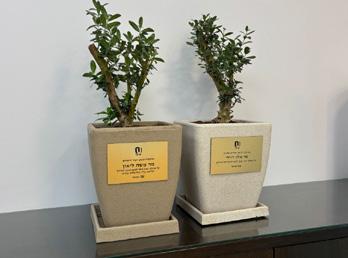
The heads of major companies and organizations with ties to the OU were present, as well as donors and supporters. We were thankful to be able to show them a glimpse of what the OU in Israel is doing for Klal Yisrael, for teens at risk all across the country, and for the English speaking population of Israel, ensuring they have the community they need in Israel to acclimate and have a smooth absorption. The OU Israel board celebrated with us, and they too had the opportunity to see how their work is impacting so many so positively. Representatives of several municipalities that we work with were also there and saw all that we are doing, to help them understand our mission and to see the great potential to do even more in their cities.
We showed a very meaningful pre-recorded video message from President of Israel Isaac Herzog, who could not make it but believed this night was so important he provided a message of his own for everyone to hear about the OU’s impact in Israel. He spoke about the unique times we are living in now in Israel and the world, and how OU Israel’s work is more crucial than ever.
When I got up to speak, I said that in the
last two years, we learned many things about our world. One thing we learned is that the distance between Israel and North America is much smaller than we thought. Despite

In loving memory of our father Israel C. Katz z”l
Memphis, Tennessee
On his 1st Yahrtzeit 9 Shvat, February 7th
The Katz Family
the drop in the number of flights from North America, we have seen time and time again how close our hearts are, and that Jews are so connected around the world. How many missions came, so many through the OU? How many chesed trips were organized? How much clothes and boots and fighting gear was donated and sent by every means necessary to help us in our time of need? OU Israel is still getting help from our brothers and sisters overseas, and we continue to provide help to all those we come in contact with.
To hear these Mayors, leading rabbis, and representatives, so connected to their people, speak about their constituents, and their love and concern for them was really inspiring to us. Their people, especially their teens at risk, are their olive plants, their non-biological children, who they have been chosen and elected to protect and help grow. It is such a merit to us that they have partnered with us for many decades. As a token of our appreciation, we presented Mayor of Yerushalayim Moshe Lion and Mayor of Sderot Alon Davidi with miniature olive plants, representing the growth of their communities and the youth growing to inculcate the values and positive attributes of their leaders.
May these olive trees grow into olive trees all over the country, and may we continue to see the great impact we are having as advisors, staff, professional psychologists, all across the country helping today’s teens grow into the adults of tomorrow. May these teens continue to learn to overcome challenges and guarantee the strong and healthy future of the State of Israel.
The same pure olive oil we light the miraculous oil of Chanukah with, and light our weekly Shabbat candles with, those olives
should inspire all of us in our homes and in the world to pray that the King of all Kings, HaKadosh Baruch Hu, build His Beit HaMikdash and bring the the Mashiach speedily in our days.
Wishing you all an uplifting and inspiring Shabbat,

Rabbi Avi Berman Executive Director, OU Israel

BAKA - 2 apartments next to each other, 5/3 rooms, separate entrance, balconies
9.800.000 NIS MICHAEL 052-3202488
In the heart of calm and pastoral BAKAPrivate arab house, 6 rooms, 500m + possibility of building 250m, huge garden, approx. 700m, completely renovated, underfloor heating + a/c, large parking, 5 bathrooms, 5 toilets, green
MENDEL 0528980111
CLOSE TO BAKA - New apartments! 4 rooms - 4.550.000 NIS 5 rooms - 5.380.000 NIS
Balcony, elevator, storage, parking MICHAEL 052-3202488
BAKA - New penthouse, 4 rooms in a small luxurious building with character, alone upstairs, 3rd floor + elevator, 4 orientations, 3 toilets, 2 bathrooms, terrace / sukkah, 70m, parking, store-room
GANEI KATAMON
5450000 NIS MENDEL 052-8980111
Garden apartment 110m + large garden, 370m, 30m terrassa, elevator, storeroom & parking
9.000.000 NIS MENDEL 052-8980111
MOSHAVA / In a building after TAMA 38, new apartment, 4 rooms, 3rd floor + elevator, balcony/partial sukah, opened sight, 2 bathrooms, calm, parking
MENDEL 052-8980111
CITY CENTER - 2 rooms, Savyon view luxurious, furnished, Shabbat elevator, concierge
2.870.000 NIS MENDEL 052-8980111
BAKA / MEKOR HAIM - 4 rooms, 90m, 2nd floor + elevator, completely renovated, fireplace, a/c, gas heating, very central, close to all amenities

MENDEL 052-8980111
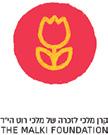
MICHAEL 052-3202488
Keren Malki empowers families of children with special needs in Israel to choose home care. Donations are tax-approved in Israel, US and UK.
Near Arnona Hatzaira, in a step building, very large 5-room apartment + balcony/sukkah, 40m, renovated, 3rd floor, private entrance, quiet, potential for extra independent unit
3 rooms, that will be transformed to 90m, 3rd floor with elevator, store-room,
kerenmalki.org 02-567-0602
ONLY 2550000 NIS
Honoring the memory of Malka Chana Roth ד”יה 1985-2001, killed in the Sbarro bombing.
MICHAEL 052-3202488
In the pastoral BAKA - quiet and central, stunning villa 350m, in a magical atmosphere,




















OU EXECUTIVE VICE PRESIDENT
A well-known Talmudic passage (TB Megillah 10b) describes the scene in heaven as the Jews miraculously crossed through the sea. The angels wished to sing their own song of praise to God for the miracle of the Jewish People’s salvation, but God objected: “My handiwork – the Egyptians - are drowning in the sea and you are singing?!” So, the angels did not sing, v’lo karav zeh el zeh kol halaylah.
Yet, we, the Jewish people sang, and our song was precious, divinely inspired, and immortalized, such that we repeat it every single day in its entirety and invoke its central lines before we pray the Amidah each morning and night. What is the difference? Why could people sing when the angels could not?
Rav Shimon Schwab offered a meaningful explanation. This was a moment that involved both celebration and grief, a complexity the Jewish People would need to learn
May the Torah Learning in this week’s Torah Tidbits be in loving memory of my father
Irving I. Stone
to live with and even embrace. We would sing over our salvation even as we remained aware of the sadness of the concurrent loss on the enemy side. Angels, on the other hand, are not built for complexity. Each angel has one exclusive mission (Bereishit Rabba 50:2) and is incapable of either practical or emotional multitasking. Unlike us, the angels could not sing and cry simultaneously, rejoicing for our salvation while crying over the loss of G-d’s creations.
That is one approach to the question, and it carries particular resonance during these confusing times where we have become accustomed to the incredible joy of seeing our hostages freed, mixed with the fear and anger of watching Hamas and many Palestinians celebrate the return of their murderous and unrepentant terrorists. We have become accustomed to the complexity of laughing and
In loving memory of our mother, grandmother, great-grandmother, and great-great-grandmother
crying simultaneously.
is reluctant to send Yishmael away and Yitzchak seeks reconciliation with Yishmael and seeks to bless Esav.
The
We can also consider another approach to the question. The angels were not a party to the conflict playing out at the sea. From their perch in heaven, they observed objectively what was unfolding in the world below. They saw the Jews emerge from the sea and the Egyptians drown, and their joy for the one side was offset by the tragedy on the other. The Jews on the other hand made no claim on objectivity. We had been enslaved and afflicted by the Egyptians and now we were free, and so of course we would sing and express our personal and national gratitude. We had to be joyous as there is no virtue in aspiring for objectivity that detaches us from our own experience and our personal and subjective feelings.
6th Aliya (25:1-11) Avraham marries Keturah; they have 6 sons. All that Avraham has goes to Yitzchak; these are sent eastward with gifts. Avraham dies at age 175; he is buried by Yitzchak and Yishmael in Ma’arat Hamachpelah. Yitzchak is blessed by G-d: he lives in Beer L’chai Roi. The transition from Avraham to Yitzchak is complete. While G-d has been a silent partner in this parsha, here He completes the generational transfer – He blesses Yitzchak. The Jewish people will be Yitzchak and not Yishmael.
7th Aliya (25:12-18) The generations of Yishmael are enumerated. Yishmael dies. His descendants dwell from Egypt to Assyria. Yishmael’s story is brief. He has numerous and powerful offspring. The brevity
is to emphasize that the Torah is not as interested in the history of power as in the history of the covenant of G-d with the Jewish people. And that will be told at great length.
“At
that time I will bring you in and gather you...when I return you before your eyes, says the Lord.”
Ashkelon
Keeps Growing!
One of the core issues debated in the modern State of Israel is the tension between its Jewish and democratic values. In truth, even our Jewish value of Darkei Shalom guides us to be hospitable, respectful, charitable, and compassionate towards every human being in need, Jew and non-Jew. But universal respect and compassion do not supplant personal and national commitment and must not reduce our allegiance to each other, to prioritizing our care for our fellow Jews and our commitment to build Jewish life.
and our next step will be to plant a fruit tree. I never thought of myself as being the agricultural type, but the feeling of settling and planting a portion of Eretz Yisrael, has been truly euphoric. Iy”H, when we plant our tree, and eat the fruits that will grow one day, I think we will be able to truly appreciate that unique Kedusha found in the fruit of Eretz Yisrael!

The theme of this week’s haftorah echoes the theme in our parsha which mentions both the death of Sarah and Avraham.
Contact us for the lar gest selection of sea-view proper ties for sale or rent.
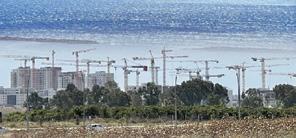
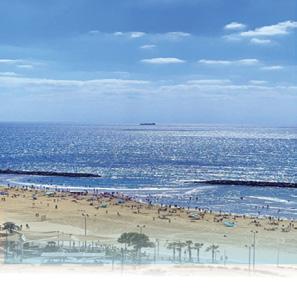
King David was an older man and a woman was assigned to him to serve him and provide warmth.
Adoniyahu, one of King David’s sons, began to prepare for ascension to his father’s throne. This was despite the fact that King David expressed his wishes that his son Shlomo succeed him.


Adoniyahu convinces two very significant personalities - the High Priest and the commander of King David’s armies - to
BY RABBI CHANOCH YERES
R av, Beit Knesset Beit Yisrael, Yemin Moshe
When Avraham addresses the people of Cheit, trying to acquire a burial spot for his wife, he says “Ger V’Toshav Anochi Eimachem” (23:4) “A Stranger and a Resident am I with you”
This seems to be a contradiction. If one is a stranger than he is not a resident, if he is a resident than he is no longer a stranger. What did Avraham mean?
The Magid of Dubno (Jacob ben Wolf Kranz 1741-1804) explains that Avraham watched how he spoke in this tense situation in order to, both, state his truth and be able to keep the peace -Shalom Bayit. Avraham said, on the one hand, “I am a Resident’ due to G-d’s promise to receive this Land and on the other hand, I still need your agreement to purchase a plot. In other words, Avraham implied “I am the resident” and you are the “strangers”, while they understood him as saying that “they” are the residents and Avraham is the stranger. The peace was kept, and Avraham remained true to his ideals. Shabbat Shalom
To conclude, when you buy your Tu B'shvat fruit this year, don’t search for those dried apricots and banana chips imported from Turkey. Rather, head over to the fresh produce and buy yourself some nice juicy Kedusha-filled Jaffa oranges and thank in , imbibing that Kedusha in every bite that
Angels are objective, but people live and celebrate their relationships. We must be universally kind and caring but exceptionally committed to each other and to the Jewish future.


We are a young senior couple looking for a 1 bedroom furnished apartment in Jerusalem from December 2021-June 2022 0524419731

Prime Location in the German Colony HaTzfira Street
For Sale: Ben Maimon, 4 rooms, 113m, 2 bathrooms, porch, 1st floor, elevator, 6.2 million NIS
A boutique Tama 38 project set to be completed within 30 months, offering an exceptional living experience in one of Jerusalem’s most desirable neighborhoods. Highlights Include: � Spacious 3 and 4-room apartments, all with Sukkah balconies and storage � A luxurious penthouse with nice space and terraces. � Private parking and high finishes. � Ideally located close to cafes, shops, and cultural attractions.
Smadar 050-3114040 // 02-642-4329 smadi_bida@walla.co.il

For more details, please contact Trust Real Estate Smadar - 050-3114040



TALBIEH - Private Land:
TAMA 38: 4 Rms, 128 sqm (incl. MB en suite), balcony, Shabbat elevator, Old City view!
Occupancy: February 2026.
Price: NIS 65,000 per sqm.
RECHAVIA
brickS tone SafeS have come to JeruSalem! your peace of mind – our reSponSibility!
brickS tone SafeS have come to JeruSalem! your peace of mind – our reSponSibility!
*Duplex! 5 bdrms, 25 sqm kitchen, succah, shabbat elevator, 2 parking, storage.
NACHLAOT / CITY CENTER
Bricks tone specializing in safety deposit vaults is opening its new branch to residents of Jerusalem and surrounding areas in the Clal Building. At your service are safety deposit boxes of various sizes to s tore your valuables. The center is secured 24/7 at the most stringent international standards. The location and boxes are secured by Lloyds International.
Bricks tone specializing in safety deposit vaults is opening its new branch to residents of Jerusalem and surrounding areas in the Clal Building. At your service are safety deposit boxes of various sizes to s tore your valuables. The center is secured 24/7 at the most stringent international standards. The location and boxes are secured by Lloyds International.
Bricks tone specializing in safety deposit vaults is opening its new branch to residents of Jerusalem and surrounding areas in the Clal Building. At your service are safety deposit boxes of various sizes to s tore your valuables. The center is secured 24/7 at the most stringent international standards. The location and boxes are secured by Lloyds International.


*2 rms, priv. entr. storage room, NIS 2,190,000
*2 One bedroom apartments, renovated, purchase together or separate, shabbos elevator, view!
OLD KATAMON



Aliya-by-Aliya Sedra Summary
Rabbi Reuven Tradburks
RABBI REUVEN TRADBURKS
RCA Israel Region
RCA ISRAEL REGION
In memory of Evelyn Rivers a”h
Mother of Reuven Tradburks
Paro pursues, the sea splits, the people sing. The people traveled and complained for water in Mara, for bread and meat in the Desert of Sin and for water in Refidim. Amalek attacked and was defeated.
1ST ALIYA (13:17-14:8)
G-d guides the Jews in the direction of the Sea. Moshe takes Yosef’s bones. A cloud guides them by day, fire by night. G-d instructs them to avoid the straight route to the Land of Israel for fear that return to Egypt will be too easy. Rather camp at the sea so that Paro will notice. I will harden his heart and he will pursue, in order that Egypt will know that I am G-d. Paro led his elite chariots in pursuit.
Hoping for freedom is over; now we are actually free. Freedom has its own challenges; it is a life of uncertainty, of decisions. The slave, while deprived of freedom, has little uncertainty, few decisions. It is almost easier to live hoping for freedom than to actually be free.
Even G-d Himself is concerned that the people will balk at the uncertainties of freedom; they will wish for the comfort of the certainties of slave life. And will want to return to Egypt. Hence, He diverts them to a circuitous route.
2ND ALIYA (14:9-14)
When Paro’s army approaches, the people are afraid. They cry to G-d and say to Moshe: why did you bring us out of Egypt to die in the desert? We would have preferred to be slaves in Egypt than die in the desert. Moshe tells them not to fear, for they are about to see G-d’s redemption. The focus of the Torah changes dramatically. There have been 4 main players in this story: G-d, Moshe, Paro and the Jewish people. But one has been absent entirely from the narrative of the story; the Jewish people. In the entire story of the 10 plagues, we did not hear one word from the Jewish people. The central figure was G-d; the Jewish people completely off stage. Which is perfectly understandable because the plagues are to teach us of G-d’s mastery over the world. The Jewish people are passive observers to that display.
All of that changes here. Now we hear of their struggles, their worries, their concerns. The focus is now on the Jewish people. They are frightened and unsure.
3RD ALIYA (14:15-25)
G-d instructs Moshe to raise his hand so the sea will split. And that He will harden the heart of Egypt in order
that He be glorified through Paro and his entourage. And Egypt will know I am G-d. Moshe did so; the people entered the dry land in the sea with the waters as walls on both sides. The Egyptians followed; at morning they became trapped in the sea.
The splitting of the sea renews the theme of water as a symbol of beginnings. Water featured in Creation, in Moshe’s cradle in the river and now. Beginning of the world, beginning of the Exodus and now, the beginning of Jewish national life. Jewish national life begins with the Jews stepping into the water. It is no longer just His miracles; we participate as partners in His plan. Taking that first step into the water.
And this is the most dramatic Divine intervention of the Torah. As dramatic as the plagues were, the people sing only here. The Midrash, perhaps prompted by the question as to why there was no song of redemption in Egypt after the plagues and yet there is here, claims that all the people achieved a level of prophecy. This truly was the greatest moment of Divine intervention in the history of our people.
ALIYA (14:26-15:26)
The water returned and drowned all the Egyptians. The Jewish people saw the Egyptian dead, saw the Hand of G-d, feared G-d, believing in Him and Moshe. Moshe and the people sang “Az Yashir: I will sing to G-d, my strength, my savior, my G-d. He is the One of War. Your Hand is powerful, Your Hand vanquishes enemies. Nations will fear Him. G-d will reign forever.” Miriam led the women in song. Moshe led the people to the desert to Mara. The people complained for water. G-d instructed Moshe to throw wood and sweeten the water.
In the great song at the sea, we have emotion released. The people sing. Divine redemption demands a human response. We sensitive souls must be moved to song when the Divine Hand is so apparent. In fact, when we quote the exodus from Egypt in our tefila, we inevitably mention the Shira – people need to sing when blessed with redemption. Here we find joy, appreciation, elation and faith. And while the entire people sing with Moshe, the song is curiously in the first person singular: I sing, My strength (the English doesn’t note singular but in Hebrew “Azi”, my, singular, strength.) This is personal, individual – mine, not ours. We all sang the song at the sea; yet in the singular. My G-d saved me.
In fact, though I am merely speculating, this could be the source for the phrase in the Haggada “Each person is required to view himself as leaving Egypt”. If we are exact in recounting the story in Egypt, we must note that each person, individually, personally sang the song in the singular: My G-d saved me, My G-d fought the battle. And so, if we want to tell the story of Egypt accurately at the seder, we too must feel individually our place in that story, just as the individual Jew did at that time.
They traveled to the desert of Sin. They complained: oh, that we would have remained in Egypt with the abundance of bread and meat. The manna was provided in the morning: gather enough for a day, on Friday for 2 days. G-d appeared in a cloud.
The series of complaints begins the sticky business of being a people. However lofty freedom be, human concerns are often more immediate. They complain.
In fact, our parsha has more stories of complaint and confrontation than any parsha in the entire Torah. There are 4 stories of complaint and 2 stories of skepticism: the fear at the sea, no water at Mara, no meat or bread in the desert, no water again at Refidim, and the skepticism in trying to save manna until the next day and trying to collect the manna on Shabbat.
What an irony. In the parsha of the greatest expression of G-d’s intervention in this world, the splitting of the sea and the saving of the people, in this very parsha we have the most complaints of any parsha in the Torah. We like to question how the Jewish people could make the Golden Calf only 40 days after the revelation at Sinai. Well, the splitting of the sea is also a powerful experience of G-d’s presence and it doesn’t take 40 days to start to complain – 3 days later it starts.
Now, the complaints are justified; no water, no food. But the complaints are nonetheless noticeable.
It could be that the Torah is deliberately noting the mundane, pedestrian nature of man in close juxtaposition to the lofty, noble achievement of prophecy at the sea. We are not angels. We are human. Human beings can be majestic, elevated, holy beings. But human we remain. The story of the Torah is not the story of myth, of godlike people,
of perfection. It is a real story of real people. Their greatness. And their prosaic and mundane pettiness.
6TH ALIYA (16:11-36)
Meat will come in the evening. Each person shall gather manna daily for their needs. Some people saved for the next day; it spoiled. And some went to gather on Shabbat. G-d questioned: how long will you resist doing My commands? G-d has given you Shabbat, hence gives you double on Friday. Aharon, take a portion of manna to preserve forever. The Jewish people ate the manna for 40 years.
Shabbat precedes the giving of the Torah. The mitzvah of Shabbat is the 4th of the Ten Commandments. Yet, here already, before Mt. Sinai, is the notion of Shabbat. Prepare what you need on Friday. Gather double on Friday. Do not gather on Shabbat. Because none will fall.
There is an irony in giving the manna and Shabbat at the same time. 6 days you shall work. The seventh is a day of rest. But they are being given their food falling from heaven. What work are they doing for six days?
Here, in a non-work environment, there is Shabbat. It is meant not only as a day off from the hard work of the week. It is a holy day, a rendezvous with the Shechina. The lack of work is a means to the end of spiritual focus. An intimate day with the Shechina is meaningful – whether after 6 days of work or not.
7TH ALIYA (17:1-16)
There was no water in Refidim. The people complained, as did Moshe. Moshe was instructed to hit the rock; water was produced. Amalek attacked Happy 99th Birthday Sarah Rousso! Our OU Coffee and Conversation group wishes you many more happy and healthy ones. We all adore you
in Refidim. Yehoshua defeated Amalek. A remembrance of this war need be recorded.
The juxtaposition of the war of Amalek with all that came before is instructive. The Divine provided us with: redemption from slavery, intervention at the sea, water, food, meat, water again. It would seem that Amalek is attacking that reality. A people with a G-d that protects and provides – that is a people I attack.
The enemies of the Jewish people view us as the people of G-d. A people protected by His Hand. That provokes jealousy, resentment and denial. Of that we need no commentary.
16th of 54 sedras; 4th of 11 in Sh’mot.
Written on 215.33 lines (17th).
14 parshiot; 9 open, 5 closed.
116 p’sukim - rank: 23 (6th in Sh’mot).
681 words - rank: 19 (4th in Sh’mot).
6423 letters - rank: 18 (4th in Sh’mot).
1558 words - ranks 24th. MITZVOT

Trusted US/Israeli tax services for over 30 years
Trusted US/Israeli tax services for over 30 years
• U.S. & Israeli Tax Returns and Planning
• U.S. & Israeli Corporate Tax Returns and Planning
• U.S. & Israeli Tax Returns and Planning
• U.S. & Israeli Bookkeeping & Accounting Services
• U.S. & Israeli Corporate Tax Returns and Planning
• U.S. & Israeli Retirement and Benefits Consulting
• U.S. & Israeli Bookkeeping & Accounting Services
• IRS and Israeli Tax Authority Audit Representation
• U.S. & Israeli Retirement and Benefits Consulting
• IRS Streamlined Filing Program
• IRS and Israeli Tax Authority Audit Representation
• Estate and Trust Tax Planning
• IRS Streamlined Filing Program
• Foreign Bank Reports (FBAR)
• U.S. Child Credit
• Estate and Trust Tax Planning
• Foreign Bank Reports (FBAR)
• Other Accounting Services
• U.S. Child Credit
• Other Accounting Services
It’s never too late to file prior years’ taxreturns!
It’s never too late to file prior years’ taxreturns!
Trusted US/Israeli tax services for over 30 years It's never too late to file prior year's tax returns!
Please contact us: 02-999-2104 | 09-746-0623 |03-527-3254 | 052-274-9999
Please contact us: 02-999-2104 | 09-746-0623 |03-527-3254 | 052-274-9999
Email: alan@ardcpa.com www.ardcpa.com
Please contact us: 02-999-2104 | 09-746-0623 | 052-274-9999
Email: alan@ardcpa.com www.ardcpa.com



Email: alan@ardcpa.com www.ardcpa.com

Beshalach contains a single mitzvah of the 613, the prohibition of leaving one’s Shabbat boundary - T’CHUM SHABBAT.
)די:די(


(Hand and Machine)


Organic: Whole Wheat, Whole Spelt, GF Gluten Free Oat, Whole and Regular Wheat

hillel.leib@MatzaMan.co.il NOW: Home delivery throughout Israel.
- “G-d will fight for you, and you shall hold your peace.” (14:14)
What is the meaning of “lachem” –“For you”?








BY RABBI CHANOCH YERES RAV, BEIT KNESSET BEIT YISRAEL, YEMIN MOSHE
Rashi (1040-1105) points out that “lachem” really signifies “Bishvilchem”. Moshe is noting that G-d is going to fight for you, now, against the Egyptians as it says in Pasuk 25, “G-d fought for them.”
The Mechilta adds an additional factor. Not only at this moment shall G-d fight for you but always will G-d assist you in fighting your enemies.
The Meshach Chochmah (Rabbi Meir Simcha M’Dvinisk 1843-1926) explains this as G-d’s promise that not only now, when justified, will he fight for you, as he did by taking us out of Egypt but also, He will come to your aid “when you shall hold your peace” – when you are sinful and unworthy of help, and cannot justly demand to be saved. We are assured of redemption and hope that eventually we will live up to the correct standards. Shabbat Shalom

BY RABBI DR. TZVI HERSH WEINREB OU EXECUTIVE VICE PRESIDENT, EMERITUS
BY RABBI DR. TZVI HERSH WEINREB OU EXECUTIVE VICE PRESIDENT, EMERITUS
This week, we read Parshat Beshalach (Exodus 13:17-17:16). It narrates the miraculous splitting of the sea and the sublime song of praise composed by Moshe and sung by all
May the Torah learning in this week’s Torah Tidbits be in loving memory of
Our father: Yosef Baer
ben Shmuel Avraham z”l on his 45th yarzheit
Our twin brother:
Michael Moshe Leib
ben Yosef Baer z”l on his 16th yarzheit
Our cousin:
Matthew Silverberg
Meir Zalman ben Gödel Pesach z”l on his11th yarzheit
Our cousin:
Richard Tilis Reuvan
ben Saul z”l on his 2nd yarzheit
Sorely missed by many Malka & Avraham Shrybman
of Israel, including his sister Miriam and the women who joined her with music and dance.
This Shabbat is, therefore, known as Shabbat Shira, the Sabbath of Song. It is an occasion to reflect upon the central role of music and song in Jewish religious tradition.
On a personal level, it is also an occasion for me to reminisce about the role of music and song in my own childhood and onward to this very day. Perhaps I should speak not just of reminiscence but of reliving, because song permeates every moment of my prayer life, and Jewish songs and tunes are always in the background of my consciousness as I write, read, study Torah, or walk the trails of nearby parks.
Negina, Jewish melodies, and at times even secular music, live within me always: as I walk the streets of Jerusalem, as I mourn our current national sorrows, as I celebrate the release of our precious hostages, as I stand by the open graves of our heroes and heroines, and especially as I dance with the Torah on Simchat Torah, although those songs are now tempered by tears after the events of October 7, Simchat Torah 2023.
The origins of “music in my mind” trace back to my grandparents and to my great-grandmother, who sang Yiddish lullabies to me in my infancy, some of which I remember to this day.
But most of all, I credit my musical inclinations to my father, may he rest in peace, who was a popular baal tefillah, prayer leader, and a master of Chassidic songs and melodies. I
would stand by his side when he led tefilot in shul, even as a very young child. And I accompanied him at the table as he sang the zemirot during the festive family meals of Shabbat and Yamim Tovim
One of the strategies used by my father to stimulate my interest in Jewish liturgical music was to take me with him to visit the diversity of synagogues that then dotted the map of the community in which I was raised, the Boro Park, Brooklyn of the 1940s and 1950s. They included Chassidic shtieblach, Yemenite batei knessiot, minyanim in the private homes of elderly sages, and large formal synagogues blessed with famous cantors and choirs.


One of those synagogues was Congregation Bethel, later enlarged to Young Israel Bethel. The spiritual leader there was Rabbi Israel Schorr, an outstanding scholar, teacher, and preacher. He was educated in pre–Holocaust Galicia and studied under the famed Rabbi Mayer Arik. Rabbi Schorr served the congregation for well over sixty years, before his demise in the year 2000.
The cantor there at that time was the world-renowned Chazzan Moshe Koussevitsky.
My parents had a close connection to Rabbi Schorr, who officiated at their marriage. My mother, may she rest in peace, attended Rabbi Schorr’s weekly classes regularly, whereas my father favored the Chazzan and would take me with him especially on special occasions such as this week’s Shabbat Shira. What better opportunity to take one’s reluctant tenyear-old boy to synagogue than the Sabbath of Song graced by a world-class cantor!
I can recall sitting in the crowded domed synagogue, impressed for a while by the indubitable talent of Moshe Koussevitsky. I





remember being impressed by the way he acknowledged the children in the audience with a smile and a wave. But I also recall my growing boredom as his rendition seemed to endure an eternity for this fidgety ten-year-old.
Then the rabbi mounted the pulpit. I was sure that we were in for a long sermon and that I could not possibly sit still for the next half hour or more.
But I did not count on Rabbi Schorr’s wisdom, common sense, and brilliant sense of humor. He began his sermon with the phrase in the weekly portion: “Az yashir Moshe,”

which is usually translated, “Then Moshe sang,” but which literally means, “Then Moshe will sing,” in the future tense.
Our Sages comment: “shar lo ne’emar, ela yashir”, “it does not read Moshe sang (shar) but rather will sing (yashir).” While the adult audience sat back waiting for the long sermon that would soon unfold, we ten-year-olds yawned and wished we could escape to the nearby playground.
But then Rabbi Schorr continued, quoting the commentary, “Az yashir Moshe, shar lo ne’emar” and proceeded in his heavily accented but sophisticated English to announce: “This brief passage can be rendered into simple English: ’When Moshe sings, Shorr [“shar”] does not speak.’ I therefore heed the commentary, and when Moshe Koussevitsky speaks, I, Israel Schorr remain silent.”
My peers and I breathed a sigh of relief. My father, whose custom it was never to speak in shul in words other than those in the prayer book, commented to me in Yiddish as we left the synagogue, “Der Rav hatt sechel!”, “This Rabbi has common sense!”
But in the many years since, I have come to appreciate the late Rabbi’s deeper meaning. He conveyed to his constituency the lesson that there are times when musicality of prayer overrides verbal teachings of prayer,
Car owner
when an inspiring cantorial rendition surpasses a rabbinic lecture.
Thus, Moshe did not react to the moment of a miracle with a long speech. Rather, he chose poetry over prose and sang a song so impactful that later generations recite his words daily, to this day.
Sometime later, I married into a family whose ancestral heritage is of noted Chassidic music. My wife Chavi’s grandfather was the Modzitzer Rebbe, Rav Shaul Taub, the composer of hundreds of melodies, some so popular that their origin is no longer known, and many others that are known by those who follow the ongoing creation of Chassidic music by his descendants and disciples.
Rav Shaul, in his posthumously published writing, raises a question about the culmination of the Song of the Sea’s narrative. The narrative culminates with a description of how Miriam led the women of Israel in singing the song’s refrain to music—timbrels and flutes and dance. “Where did those musical instruments come from?” asked Rav Shaul.


He answered that wise Miriam was confident that as the Israelites left Egypt, there would be moments of threat and crisis. But our people would enjoy miraculous divine intervention that would allow us not only to triumph over threat and crisis, but to celebrate joyously in gratitude to the Almighty. She foresaw that those musical instruments would then come in handy, to say the least.
And in a further comment, Rav Shaul quotes this passage in Psalms 106: “Vaya’ar batzar lahem b’shamo et rinatam”, “He saw that they were in distress when He heard their song.”
Tears open the gates of Heaven. Song perhaps even more so. Happy Shabbat Shira!











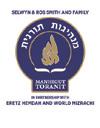




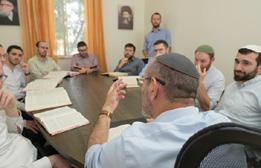
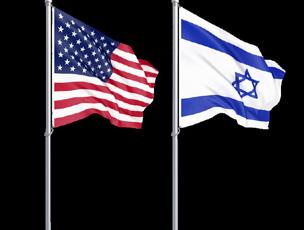


(trusts,
Have significant US-Israeli passive income or reached 10-year Aliyah expiration
Need estate planning or manage US-based parents' finances
GREAT INVESTMENT CLOSE TO EMEK REFAIM
3.5 rooms, with a process to get a new 4 room apt of 103m, in a luxury building with elevator, balcony, parking, 2,900,000 NIS (potential to double the investment!)
OLD KATAMON - Charming 3.5 rooms, Arabic style building, 1st floor, good shape, 2 balconies, high ceilings, sunny, quiet, 3,300,000 NIS
RASKO CLOSE TO OLD KATAMON
New 4 rooms, in a small modern building with elevator, 100m, 15m balcony with view, large living room, master bedroom, quiet, parking, 4,100,000 NIS
CHARMING APT IN OLD KATAMON
Unique 3 rooms, 92m neto, ground floor of an arabic style house, 2 entrances, high ceilings, balcony, very spacious, 3 directions, rare!


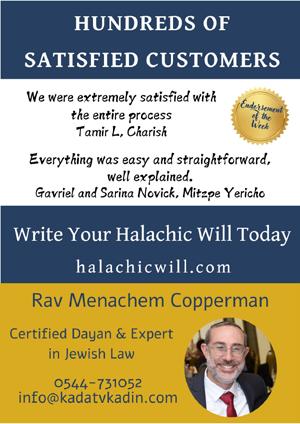
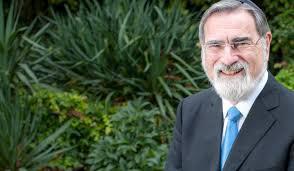
on
RABBI LORD JONATHAN SACKS ZT"L
RABBI LORD JONATHAN SACKS ZT"L
FORMER CHIEF RABBI OF THE UNITED HEBREW CONGREGATIONS OF THE COMMONWEALTH
FORMER CHIEF RABBI OF THE UNITED HEBREW CONGREGATIONS OF THE COMMONWEALTH
May the learning of these Divrei Torah be תמשנ
HaRav Ya'akov Zvi ben David Arieh zt"l
For the first time since their departure from Egypt, the Israelites do something together. They sing.
“Then Moses and the children of Israel sang this song to the Lord.” (Exodus 15:1)
Rashi, explaining the view of Rabbi Nehemiah in the Talmud1 that they spontaneously sang the song together, says that the Holy Spirit rested on them and miraculously the same words came into their minds at the same time. In recollection of that moment, tradition has named this week Shabbat Shirah, the Sabbath of Song.
What is the place of song in Judaism?
There is an inner connection between music and the spirit. When language aspires to the transcendent and the soul longs to break free of the gravitational pull of the earth, it modulates into song. Music, said Arnold Bennett is “a language which the soul alone understands but which the soul 1. Sotah 30b
can never translate.” It is, in Richter’s words “the poetry of the air.” Tolstoy called it “the shorthand of emotion.” Goethe said, “Religious worship cannot do without music. It is one of the foremost means to work upon man with an effect of marvel.”
Words are the language of the mind. Music is the language of the soul. So when we seek to express or evoke emotion we turn to melody. Deborah sang after Israel’s victory over the forces of Sisera (Judges 5). Hannah sang when she had a child (I Sam. 2). When Saul was depressed, David would play for him and his spirit would be restored (1 Sam. 16). David himself was known as the “sweet singer of Israel” (II Sam. 23:1). Elisha called for a harpist to play so that the prophetic spirit could rest upon him (II Kings 3:15).
The Levites sang in the Temple. Every day, in Judaism, we preface our morning prayers with Pesukei de-Zimra, the ‘Verses of Song’ with their magnificent crescendo, Psalm 150, in which instruments and the human voice combine to sing God’s praises.
Mystics go further and speak of the song of the universe, what Pythagoras called ‘the music of the spheres.’ This is what Psalm means, when it says:
The heavens declare the glory of God; the skies proclaim the work of His hands .
. . There is no speech, there are no words, where their voice is not heard. Their music2 carries throughout the earth, their words to the end of the world. (Psalm 19)
Beneath the silence, audible only to the inner ear, creation sings to its Creator.
So, when we pray, we do not read: we sing. When we engage with sacred texts, we do not recite: we chant. Every text and every time has, in Judaism, its own specific melody. There are different tunes for Shacharit, Mincha, and Maariv, the morning, afternoon, and evening prayers. There are different melodies and moods for the prayers for a weekday, Shabbat, the three pilgrimage festivals, Pesach, Shavuot, and Succot (which have much musically in common but also tunes distinctive to each), and for the Yamim Noraim, Rosh Hashanah and Yom Kippur.
There are different tunes for different texts. There is one kind of cantillation for Torah, another for the Haftara from the prophetic books, and yet another for Ketuvim, the Writings, especially the five Megillot. There is a particular chant for studying the texts of the written Torah, for studying Mishnah and Gemara. So by music alone we can tell what kind of day it is, and what kind of text is being used. There is a map of holy words, and it is written in melodies and songs.
Music has extraordinary power to evoke emotion. The Kol Nidrei prayer with which Yom Kippur begins is not really a prayer at all. It is a dry legal formula for the annulment of vows. There can be little doubt that it is its ancient, haunting melody that has given it its hold over the Jewish imagination. It is hard to hear those notes and not feel that 2. Kavam, literally “their line,” possibly meaning the reverberating string of a musical instrument.


Jerusalem Real Estate is My Business Eta: 054-723-3863
Amazing stand alone homes in OLD KATAMON, TALBIYA, BAKA, GERMAN COLONY
BAKA. Mini penthouse. Built 89 sqm as 2 bedrooms and 2 full bathrooms. High ceilings, amazing views outdoor space 56 sqm including pool!!! Shabbat elevator all day, 2 reg parking spaces plus storage. Living space all on one floor from elevator. Pool upstairs. Great property.
Price: 6,500,000 NIS
OLD KATAMON. 174 sqm primary residence, large garden in use, fully accessible, 4 bedrooms. Plus a studio of 19sqm. 9,500,000 NIS.
MUSRARA. Beautiful original Jerusalem home 185 sqm, completely renovated. Private entrance into magical garden. Sold with a renovated unit used for AirBnB. Parking spot option. 7,400,000 NIS
In GERMAN COLONY. 300 sqm plus 170 sqm reg garden. Plus parking & roof top terrace. 18.000,000 NIS
180 sqm Penthouse on an exclusive street in ARNONA. 40 sqm balcony, registered parking. Very high standard finish. 9,800,000 NIS





Eta Morris Realty, Ltd. etamorrisrealestate@gmail.com Eta: 054-723-3863 etamorrisrealty.co.il
you are in the presence of God on the Day of Judgment, standing in the company of Jews of all places and times as they pleaded with heaven for forgiveness. It is the holy of holies of the Jewish soul. (Lehavdil, Beethoven came close to it in the opening notes of the sixth movement of the C Sharp Minor Quartet op. 131, his most sublime and spiritual work).
Nor can you sit on Tisha b’Av reading Eichah, the Book of Lamentations, with its own unique cantillation, and not feel the tears of Jews through the ages as they suffered for their faith and wept as they remembered what they had lost, the pain as fresh as it was the day the Temple was destroyed. Words without music are like a body without a soul.
For many years I was privileged to be part of a mission of song (together with the Shabbaton Choir and singers Rabbi Lionel Rosenfeld and chazzanim Shimon Craimer and Jonny Turgel) We journeyed to Israel to sing to victims of terror, as well as to people in hospitals, community centres, and food kitchens. We sang for - and with - the injured, the bereaved, the sick and the broken hearted. We danced with people in wheelchairs. One boy who had been blinded and lost half of his family in a suicide bombing, sang a duet with the youngest member of the choir, reducing the nurses and his fellow patients to tears. Such moments are epiphanies, redeeming a fragment of humanity and hope from the random cruelties of fate.
Beethoven wrote over the manuscript of the third movement of his A Minor Quartet the words Neue Kraft fühlend, “Feeling new strength.” That is what you can sense in those hospital wards. You understand what King David meant when he sang to God the words: “You turned my grief into dance; You
removed my sackcloth and clothed me with joy, that my heart may sing to You and not be silent.” United in song, you feel the strength of the human spirit no terror can destroy.
In his book, Musicophilia, the neurologist and writer Oliver Sacks (no relative, alas) tells the poignant story of Clive Wearing, an eminent musicologist who was struck by a devastating brain infection. The result was acute amnesia. He was unable to remember anything for more than a few seconds. As his wife Deborah put it, ‘It was as if every waking moment was the first waking moment.’
Unable to thread experiences together, he was caught in an endless present that had no connection with anything that had gone before. One day his wife found him holding a chocolate in one hand and repeatedly covering and uncovering it with the other hand, saying each time, ‘Look, it’s new.’ ‘It’s the same chocolate’, she said. ‘No’, he replied, ‘Look. It’s changed.’ He had no ability to hold onto his memories at all. He lost his past. In a moment of self-awareness he said about himself, ‘I haven’t heard anything, seen anything, touched anything, smelled anything. It’s like being dead.’
Two things broke through his isolation. One was his love for his wife. The other was music. He could still sing, play the organ, and conduct a choir with all his old skill and verve. What was it about music, Oliver Sacks asked, that enabled him, while playing or conducting, to overcome his amnesia? He suggests that when we ‘remember’ a melody, we recall one note at a time, yet each note relates to the whole. He quotes the philosopher of music, Victor Zuckerkandl, who wrote, ‘Hearing a melody is hearing, having heard, and being about to hear, all at once.
Every melody declares to us that the past can be there without being remembered, the future without being foreknown.’ Music is a form of sensed continuity that can sometimes break through the most overpowering disconnections in our experience of time.
Faith is more like music than like science. Science analyses, music integrates. And as music connects note to note, so faith connects episode to episode, life to life, age to age in a timeless melody that breaks into time. God is the composer and librettist. We are each called on to be voices in the choir, singers of God’s song. Faith teaches us to hear the music beneath the noise.
So music is a signal of transcendence. The philosopher and musician Roger Scruton writes that it is “an encounter with the pure subject, released from the world of objects, and moving in obedience to the laws of freedom alone.” He quotes Rilke: Words still go softly out towards the unsayable
And music, always new, from palpitating stones
Builds in useless space its godly home.
The history of the Jewish spirit is written in its songs. The words do not change, but each generation needs its own melodies.
Our generation needs new songs so that we too can sing joyously to God as our ancestors did at that moment of transfiguration when they crossed the Red Sea and emerged, the other side, free at last. When the soul sings, the spirit soars.
These weekly teachings from Rabbi Sacks zt”l are part of his ‘Covenant & Conversation’ series on the weekly Torah teaching. With thanks to the Schimmel Family for their generous sponsorship, dedicated in loving memory of Harry (Chaim) Schimmel. Visit www.RabbiSacks.org for more.

054-462-9963
hellenrealestate.com hellenduman50@gmail.com
Greek Colony: First floor, 90sqm, 2 balconies, storeroom, 4.7 mil NIS

Arnona: Ground fl, 220m, parking, garden (200m), 9 mil NIS

Rechavia: Tama project, ground fl, 170m, parking, garden access, 7.9 mil NIS

Former Assist. Clinical Professor of Medicine, UCLA School of Medicine; Div. of Endocrinology & Metabolism


BY RABBI NACHMAN (NEIL) WINKLER FACULTY, OU ISRAEL CENTER
It seems that each time I review the story of Devorah HaNeviah, the prophetess Devorah, and the victory of Israel over the Canaanites, I learn a new twhing or unveil a new concept that I had not understood before. Over the past five years, I have, in these pages, shared the many similarities between the events in the haftarah and those we read in the parasha. They share not only the victory over an oppressive enemy and the resultant song of victory and praise to Hashem, but even the destruction of the enemy armies through their “entrapment” in the marshy ground, which made their many chariots ineffective. Likewise, both battles were fought upon the command by G-d to His prophets, both clashes left but one survivor (“lo nish’ar… ad echad”) and after both wars, a woman prophetess sang a “shira”-Miriam together with the women and Devorah together with her general, Barak. There are, of course, other parallels between the two stories, as the G’mara in Pesachim (118b) enumerates, but I was struck recently at a parallel that I had not previously realized.
“Aseh lahem …k’Sisra k”Yavin b’Nachal Kishon. Nishm’du b’Ein Dor, hayu domen la’adama”. The psalmist turns to Hashem (Sefer Tehillim 83: 11-12) asking Him to
defeat Israel’s enemies as He had done to Sisra and his king Yavin. Given the miraculous victories that G-d had wrought for Israel over the years, I was curious as to why David HaMelech chose this war, the war fought by Devorah and Barak against the K’na’anim, as a “model” of a complete victory for which he prayed. And it dawned on me that this battle was the very last one that B’nai Yisra’el were to fight against any of the local Canaanite tribes. It was a total victory which, as the final words of the haftarah indicate, provided for a forty year era of peace. And, in this way as well, the saga of Devorah parallels the story in the parasha, for, after all, this too was a complete victory and was the very last battle that the Israelites would have to wage against the Egyptians for many years.
I would like to add, however, two differences between the two stories that are important to note. The newly freed slaves at Yam Suf were incapable of facing the Egyptians. They cried out to Moshe that they preferred remaining slaves to the Egyptians than meeting their inevitable deaths in the desert. Their perception of their oppressors as still being their “masters” weakened any resolve they may have had to fight them. Moshe silenced their cries by reassuring
them by saying: “Hashem yilachem lachem” (“Hashem will fight for you…”). Devorah, however, turns to her general, Barak, and directs him to gather an army from Yissachar and Zevulun, turning to all of the tribes with the call to join Barak in battle.
The difference between fighting their own war rather than have G-d fight for them may well have been due to the second difference I alluded to. The threat of Sisera and his army was not simply to control Israel and demand tribute and taxation from them. The perek in Tehillim makes it quite clear that their pur pose was “nirsha lanu et neot Elokim”, “to




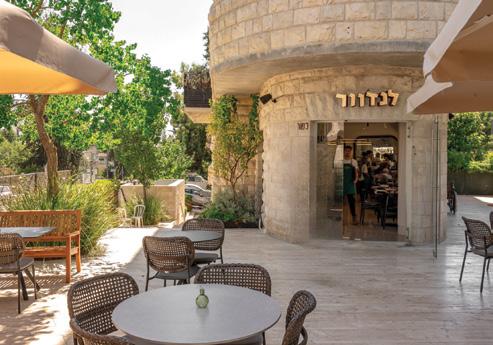
https://www.ouisrael.org/video-l ibrary


Visit Us :









21-22 February
Tefilla with Nachman Solomon ("Solomons bros")
Friday night 17:15
Shabbat morning 8:15 followed by Cholent Kiddush
All welcome!
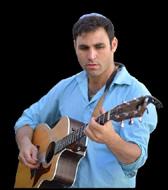

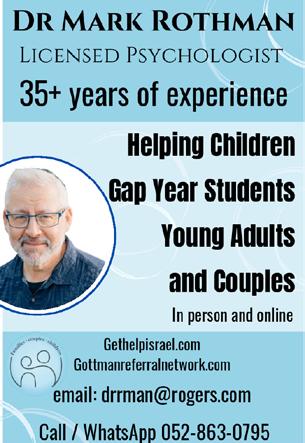
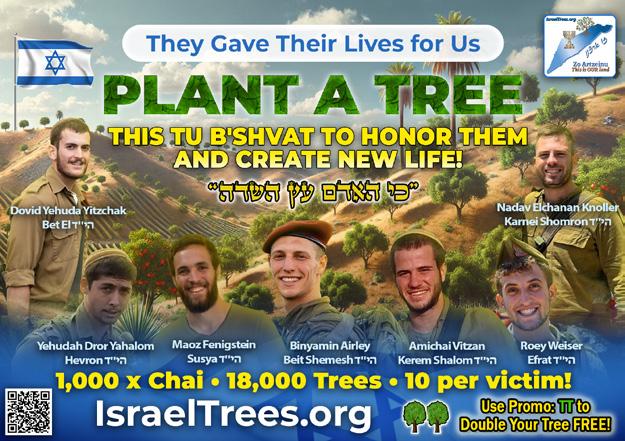



Rabbi Shalom
ROSNER RAV KEHILLA, NOFEI HASHEMESH MAGGID SHIUR, DAF YOMI, OU.ORG
Rabbi Neiman (Darchei Mussar) wrote an inspiring thought on Parshat Beshalach following the Six Day War in 1967 that resonates today. He inquires as to why it is that our generation (1967) merits witnessing miracles that previous generations, that consisted of more righteous individuals, did not experience? Before the Six Day War there was a feeling of fear and trepidation, as Israel was surrounded by enemies with thousands of soldiers on several fronts. Yet, we were miraculously victorious.
Why did that generation merit such miracles that were not experienced by previous generations during which great tzadikim and Torah scholars lived?
We recite the verse in Shir Hamaalot before benching וניפ קוחש אלמי זא – that in the times of Maschiach laughter will fill our mouths. What will be so funny? Perhaps this is a reference to the fact that later generations, less noble and righteous than previous generations, will in fact experience the redemption. Why is that so?
The Chovot HaLevavot speaks of a chasid who had very little food and clothing but that lack of essentials did not interfere with his steadfast Emunah- belief in Hashem. God does not have to perform miracles for generations that have such strong and unwavering Emunah. But in 1967, there were many individuals, referred to by Chazal as קונית" "הבשנש – lost souls. They require miracles so that the hand of God can be revealed to them.
The Ibn Ezra asks why Hashem had to perform miracles at Yam Suf? Wouldn’t it have been better to enable the nation who just left Egypt to fight the war, be victorious and gain confidence as they march forth to conquer Israel? The Darchei Mussar explains that at that time, when the nation were slaves and among idolators, they lacked Emunah and if they fought a war, that could have resulted in a feeling of יל
הזה ליחה תא – that it was their strength that enabled them to defeat the Egyptian army. That generation needed to witness miracles in order to recognize that it was the hand of God that was protecting them םכל םחלי ’ה ןושירחת םתאו – God will fight on your behalf and you will be victorious.
In 1967, and indeed in our time, we require miracles in order to strengthen our Emunah. We all have experienced a very challenging year. Yet, we cannot overlook the obvious miracles that transpired. Beepers exploding and killing terrorists, hundreds of missiles headed toward our country and yet very
little damage done. Rav Neiman addressed our nation in 1967, but the same message resonates today.
May we internalize the message of the miracles that we are experiencing, in the same manner as the generation that left Mitzrayim. May it strengthen our Emunah in Hashem










hillel.leib@MatzaMan.co.il














Faculty, OU Israel Center
The Midrash (Shemot Rabbah 23:4) teaches, “From the day that Hashem created the world, until Israel stood at the Sea, we do not find any person who uttered a song of praise before Hashem, other than the people of Israel.” The commentators note an obvious difficulty with this statement. We know Adam Harishon sang “Mizmor shir leyom haShabbat” when he did teshuvah. Further, is it possible that our holy Avot never sang songs of praise to Hashem? What is the message in this Midrash?
Rabbi Gedalyah Schorr zt”l, in his work Ohr Gedalyahu, elaborates that the Jewish people were the first to sing Shirah not only for their deliverance but also for the challenges that preceded it. They were the first to publicly acknowledge that the hardships they endured were also part of kevod Shamayim, worthy

of Shirah as well.
“Mi kamocha ba’elim Hashem – Who is like you among powers, Hashem?” (Shemot15:11) The commentators note the word ‘ba’elim’ connotes strength but can also be understood to mean ‘with silence.’ The song expresses appreciation for what appears to be Hashem’s concealment, His ‘silence’ is also worthy of praise. Am Yisrael recognized the fulfillment of Hashem’s promise, “Anochi ered imcha Mitzrayma – I will go to Egypt with you.” (Bereisheet 46:4) The ‘Anochi,’ the Presence of Hashem was unceasingly with them even when they suffered in galut and hardship.


Dovid Hamelech proclaims, “chesed u’mishpat ashirah – of kindness and justice do I sing.” (Tehillim 101:1) Even for the challenges that look like strict justice, Dovid offers Shirah to Hashem. With contemplation one can identify how the very challenges are a manifestation of Hahem’s love for us and as a medium to discover Hashem. Rav Elias in Ani Maamin explains that when we see Hashem in the challenges as well as in the salvations, we fulfill the mitzvah of Yichud Hashem, perceiving the Oneness of Hashem. So often, we ask Hashem to ‘fix’ whatever is troubling us, yet we fail to recognize that He was the One who gave us the challenge to grow and become transformed as a result. When one can broaden his perspective as such, he can appreciate the difficulties as part of the remedy itself.
Rav Schorr zt”l offers the following insight. In the Haggadah, Rabban Gamliel lists Pesach,
Matzah and Maror as the mitzvot of the Seder, although it would be fitting for maror, representing the bitter oppression, to be mentioned first. However, it is only in retrospect, after the geulah, that we can appreciate the value of maror as part of the process.
Rav Wolbe zt”l poignantly notes that we are quick to ask, “Why me?” when we experience adversity. Truly though, when good things happen, we should also ask “Why me?” taking nothing for granted. Everything we have is a gift from Hashem, even the difficulties and the challenges, as they can bring out the deepest awareness of Hashem’s Goodness.




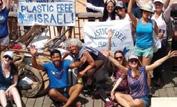
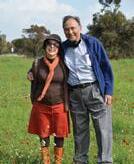


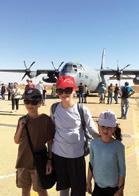

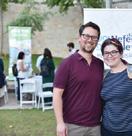
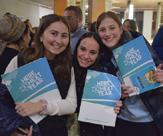
The Israel Calendar is an online platform showcasing virtual and in-person English-speaking programming throughout the country. All events posted on the calendar are designed for Olim seeking to connect with like-minded Anglos while benefiting from English-oriented events.
Hosting an event? Post your events on the calendar and share your program with the expansive Nefesh B'Nefesh community all over Israel. Join us for a cozy Hebrewlearning session at our Cafe Oleh winter sessions! WWW.NBN.ORG.IL/CAFE-OLEH





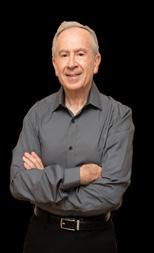
- 2 Bedrooms From 4.99M NIS* Jabotinsky St. - 3 Bedrooms - From 4.99M NIS* Kinneret: New Community - Duplex Cottages From 2.6M NIS Luxury Lake View Apartments - From 2.2M NIS


Hadera - Luxury Beachfront Apartments- Must See: 3 Bedrooms From 3.3M NIS 5 Bedrooms - 4.9M NIS
Kfar Eldad: New 4-5 Rooms - Starting - 2.25Mn NIS
Karnei Shomron: New - Starting From 1.95M NIS
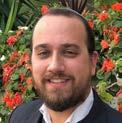
PAGE BY RABBI EZRA FRIEDMAN Director, The Gustave & Carol Jacobs Center for Kashrut Education Director, The Gustave & Carol Jacobs Center for Kashrut Education
The prohibition
Question from the OU Israel Kashrut Hotline: Shalom Rav Friedman. We have a few olive trees in our garden. My children and grandchildren like to come by during the season and pick the olives. We pick them specifically for the purpose of pickling them. The olives are inedible before the pickling. Until now we have taken terumot and ma’asrot after the pickling process. Was it correct to do so? I await your halachic advice.
Answer:
Gmar malacha for pickled olives
According to Biblical law, food that is completely kosher and cooked by a nonJew is permitted. However, our Sages decreed that such food, even when cooked in kosher utensils, is prohibited for consumption. This prohibition is known as bishul akum. In the coming weeks we will discuss the parameters of this rabbinic prohibition, including the reasons behind the decree, when it applies, and the practical halacha for modern industrial kashrut.
In order for produce to be obligated in the mitzvah of terumot and ma’asrot an action is required to show that it is ready for consumption. Normally this action is some type of organizing picked fruit in a pile after collection. Our Sages excluded wine made from grapes and olive oil made from olives since the gmar malacha is the production of the liquid (See Ne”ot Mordechai 7:61).
Food is a very connecting element in every society. That is the basis behind the decree of bishul akum. Our Sages were very concerned about close relationships with non-Jews since intermarriage is a very severe transgression. The prohibition effectively limits Jews and gentiles dining with each other, although there is no specific prohibition against dining with a non-Jew per se. (See Rashi on Avodah Zara 31:b.)
maintain that the decree is based on this issue of closeness to non-Jews that could lead to intermarriage; this is the opinion of most early authorities. However, Rashi and others attribute a different reasoning to the prohibition of bishul akum, which is that non-Jews might mix non-kosher ingredients into the kosher food. In future articles we will discuss whether the parameters of bishul akum are based on both of these reasons or just one. However, it is clear from numerous sources that the danger of intermarriage is the main reason behind the prohibition (See Torat Habayit 3:7).
The decree is binding regardless of the reason
Forbidding the non-Jew’s cooking would be enough to create an emotional distance such that families wouldn’t marry into each other.
Rabbeinu Tam (Tosfot Avodah Zara 38:a) and Rambam (Ma’achalot Asurot 17:9)
Regarding the question whether the pickling of olives would also be considered gmar malacha. This exact question is found in later authorities. Ridbaz ruled in his responsa (2107) that olives that are not used for oil are only obligated in terumot and ma’asrot once they are pickled. Ridbaz’s logic among other things is that olives are not edible until
pickled or pressed and since most olives are used for oil the same should apply to olives being pickled for consumption. Although there are other authorities who agree with the Ridbaz such as the AR”I (Sha’ar Hmitzvot: Vayelech) many authorities disagree. Rav Yosef Cairo, the author of the Shulchan Aruch (see Sefer Charedim 52) as well as the Shla”h (Sha’ar Otiyot Kedusha 134) rule that olives are like every other fruit and vegetable so once they have been designated to be eaten and not pressed they become obligated in terumot and ma’asrot. Practically, once the olives are picked and sorted they become obligated in terumot and ma’asrot even before the pickling process. The proof for the latter opinion is that although olives are not yet edible this is irrelevant since in early sources it is clear that produce that might not be edible but are ripe are obligated in halachic tithes. For example, potatoes and zucchini, although they are not edible without cooking they are still obligated in terumot and ma’asrot once they are pilled, the same should apply to olives being pickled. Chazon Ish (Ma’asrot 5:2) and Rav Ovadia Yosef (Responsa Yabia Omer YD 5:29) rule clearly like the latter opinion and as such in a case when one picks olives for the purpose of pickling them terumot and ma’asrot should
Since the transgression of intermarriage was the primary concern behind our Sages’ decree, their goal was to powerfully discourage the possibility of developing emotional connections to non-Jews that could lead to intermarriage either in that generation or the next. Accordingly, early authorities discuss whether the prohibition of bishul akum still applies even in situations where intermarriage is not technically possible. For example, Rashba, in his responsa (1:248), examines the case of food cooked by a priest. Being that Catholic priests do not marry nor do they have children with whom to intermarry, is it permitted to eat food cooked by a priest even though the reason for bishul akum seemingly does not apply to
be taken before the pickling process. So the next time you pick olives with your children and grandchildren make sure you remove terumot and ma’asrot before pickling them.

SHIUR
TO SPONSOR A SHIUR CONTACT
Chana Spivack - 050-229-4951 or donate online: https://www.ouisrael.org/donate/ou-israel-center/
RABBI BREITOWITZ’S SHIUR - TUE. FEB. 4TH
Sponsored by Brenda Bronner in memory of Gitel bas Zvi Menachem Mendel a”h whose yahrzeit is 6 Shvat, and a Refuah Shleima for Shlomo Refael ben Yael
The OU Israel Gustave & Carol Jacobs Center for Kashrut Education was created to raise awareness and educate the public in all areas of kashrut. Rabbi Ezra Friedman, Deputy Rabbinic Administrator for OU Kosher Israel is the Center's director. him? Rashba answers that we have a rule regarding rabbinic decrees: even when the reason does not apply, the prohibition still stands. This is a necessary element in every rabbinic prohibition. Otherwise, Rashba explains, people could rationalize and find reasons why any decree should not apply in their particular situation. Accordingly, Rashba concludes that even food cooked by a Catholic priest has the prohibition of bishul akum. A similar ruling is made by Ramban (Avodah Zara 35:a) regarding non-Jewish royalty who, because of their stature, are prohibited from marrying Jews. He maintains that the fact that the non-Jews are royalty is irrelevant, and that the decree of bishul akum stands regardless of the reason behind it. Taz (YD 112:1) , Shach (YD 112:4) and Pri Megadim (YD 112:1) cite these rulings as axioms of the laws of bishul akum.

gentiles, even if the ingredients and utensils are kosher.
The reason cited by most authorities is the risk of intermarriage.
Even in cases with virtually no risk of intermarriage, the food is still prohibited, including non-Jewish royalty, priests, young children, and non-Jews from distant








RABBI GOLDSHCHEIDER’S SHIUR - WED. FEB. 5TH
Sponsored by Meryl Goldwag in loving memory of her father Chazkel ben Meir z”l on his 26th yahrzeit - 3 Shvat
RABBI MANNING’S SHIUR
Sponsored for the 2025 academic year
Other examples
RABBI GOLDSCHEIDERS’S SHIUR
Sponsored for the 2025 academic year
Later authorities discuss similar cases where the logic behind bishul akum may not apply. Responsa Shevet Kehati (6:273) rules that even food cooked by a non-Jewish child is considered bishul akum, despite the fact that the chances of marriage seem remote. The same is true for food cooked in a faraway country where Jews cannot travel -- bishul akum still applies.
RABBI ADLER’S SHIUR
Sponsored for this academic year by the Frist family in memory of their beloved daughter and sister Elisheva Frist a”h
RABBI SHAI FINKELSTEIN’S SHIUR
Sponsored for the 2024-2025 academic year by the Sondhelm and Wertenteil Families in memory of Mel & Sylvia David z”l
In summary:
Our Sages prohibited food cooked by

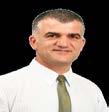
Do you have a life insurance policy you:
ARNONA: 4-room apartment, 90m, beautifully renovated, master suite, balcony, storage, Shabbat elevator, private parking 3,250,000 NIS
• No longer want?
• No longer need?
• Can no longer afford the premium?
BAKA: New 4 room apartment in a new building, 88m, master suite, storage, Shabbat elevator, private parking, 3,950,000 NIS
• Could you use extra money instead of keeping your policy?
RECHAVIA: 4-room apartment, 92m, Suka balcony, Shabbat elevator, fully accessible, private parking, storage 4,400,000 NIS
I can guarantee that if you qualify with the underwriting process I can get you more money than if you cash it in with the company.
ARNONA: 5-room apartment, 120m, balcony, elevator, fully accessible, private parking, storage 4,350,000 NIS
Please contact Moshe Russell at: Buymypolicy32@gmail.com
BAKA: 5-room garden apartment, 140m, master suite, private parking, storage, full of light, airy, nice garden, 5,000,000 NIS
OLD KATAMON: Spacious new 5-room penthouse, 155m, terrace, great panoramic view, underfloor heating, Shabat elevator, 2 parking, + rental unit, 8,900,000 NIS
FOR RENT: BAKA: nice 4-room apartment, 82m, beautifully renovated, master suite, air conditioners, balcony, 2nd floor, elevator - fully accessible, storage, 8,000 NIS

Executive Director, Camp HASC
Author of Baderech: Along the Path of Teshuva (Mosaica 2021)
Mischel EXECUTIVE DIRECTOR, CAMP HASC AUTHOR OF BADERECH: ALONG THE PATH OF TESHUVA (MOSAICA 2021)
In addition to gadlus in Torah, Rav Mordechai Gifter, zt’l, Rosh Yeshiva of Telshe Yeshivah in Wickliffe Ohio, was a very kind, sensitive soul and easy to relate to. Born and bred in Portsmouth, Virginia, the Rav was among the greatest Torah giants of America, and renowned as an inspiring and impactful orator, fluent in English, Yiddish and Hebrew.
In 1977, Rav Gifter led a group of talmidim from Telz Cleveland to Eretz Yisrael and opened a branch of the Yeshivah in the community of Kiryat Ye’arim in the Jerusalem Hills. This act laid the foundations for the yishuv known as Telz-Stone. Though deeply connected to Eretz Yisrael, he ultimately moved back to the United States due to his responsibilities and sense of achrayus to the Yeshivah in Ohio. From that point on, he felt an acute distress in being compelled to live in Chutz l’Aretz. In humility, Rav Gifter eschewed his on-campus residence and moved into a small quarters in the students’ dormitory.
During the years when Rav Gifter was living in the Jerusalem Hills, he took daily walks breathing in the holy air, the avirah d’Eretz Yisrael and enjoying the breathtaking scenery and spiritually charged stones, soil, fields and trees.
Once during one of his walks, the Rosh Yeshivah commented to his talmidim that he had heard a soul stirring song wafting in the breeze and echoing through the hills. He had looked around to locate where it might be coming from, but couldn’t find anyone singing. With increasing desire and rapture, he ran around to the other side of the hill, in search of the singer of such an exquisite, Divine melody. Breathless, he finally sat down on a large rock, when the realization overcame him: the song was coming from himself! The nigun was, so-to-speak, his own! His mind and heart were so full of the elevating and inspiring atmosphere of Eretz haKodesh enveloping him, that his inner ear spontaneously resonated with it as a heavenly melody.
This Shabbos celebrates Shiras haYam, the Song of the Sea. Experiencing the awesome miracles and Hashem’s revealed wonders, each of us, women and men, young and old, were granted the highest levels of mochin d’gadlus, awe and expansive consciousness, as well as nevuah, prophecy: “A maidservant saw at the Sea more than what Yeshayahu and Yechezkel saw.” (Mechilta)
The entire nation heard a Divinely beautiful song flowing through their own minds and hearts. Kol Dodi dofek, “The voice of my Beloved comes knocking” (Shir haShirim, 5:2). Reb Nosson of Breslov hears the word dofek as meaning ‘pulsing’. While the voice of my Beloved, the Ribbono Shel Olam, is everywhere present, it pulsates and resonates in my
inner ‘ear’, my deeper thoughts, intuition and perceptions. Moshe u-Bnei Yisrael heard the same prophetic, inner song, the song revealed in the Torah, the voice of Hashem.
Kol Hashem b’hadar
“The voice of Hashem is in beauty.”
(Tehillim, 29:4)
We too, when walking among the beautiful rocky hills of Yerushalayim, the worn cobble stones of the Old City, the dusty trails of the Negev, the forests, fields and mountains of the Galil, can be inspired by the expansive holiness of the Land, and find ourselves intu itively humming, hearing an inner rhythm. This is more than getting ‘high on your own supply’. Rebbe Pinchas of Koretz assures us: “The soul is always whispering to us.”













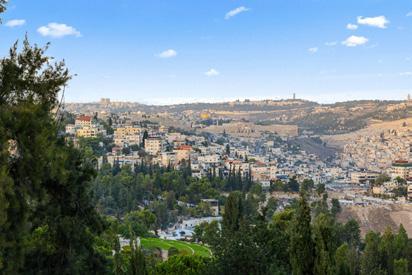
This is similar to one of the themes in Walt Whitman’s famous poem, ‘Song of Myself’. While lengthy and slightly rambling, this ode to individuality and originality expresses an endless yearning for immortality and physical sense of belonging to the world around us. Indeed, as we walk through the Land with intentionality, we can hear the whispers of our soul growing louder, swelling and expanding until we are literally singing in praise with a true sense of embodied holiness and belonging.
The Ribbono Shel Olam is the Shome’ah Tefillah, ‘the One who Hears Prayer’. The Zohar haKadosh explains, “Tefillah is an allusion to the Jewish People who are themselves called ‘prayer’. Thus, when we connect with the latent potential that lies within us and awaken deep, subconscious thoughts of teshuvah, or when we experience an authentic moment of connection, yearning, inspiration, or awe at the preciousness of the Land that God gave us, what emerges is

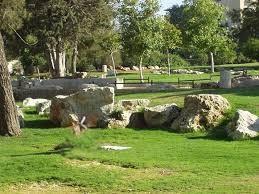



the ‘Song of Our Soul”. And this is the same source of the prayer-song, the prophetic shirah, that arose in the hearts of the entire nation while standing on the banks of the Yam Suf, beholding their miraculous salvation from their pursuers.
And this is the same awakening that the Master of the World is waiting for, the song He yearns for and anticipates hearing from within us today. May we listen to the voice of our Beloved knocking, pulsating within and without, and recognize it as the voice of our own soul!
Rabbi Yehoshua ben Levi asked Mashiach, “When will the Master come?”
Mashiach said to him, “Today!”
…Eliyahu haNavi explained, “Today — if you will listen to (Hashem’s) voice...”
(Sanhedrin, 98a)

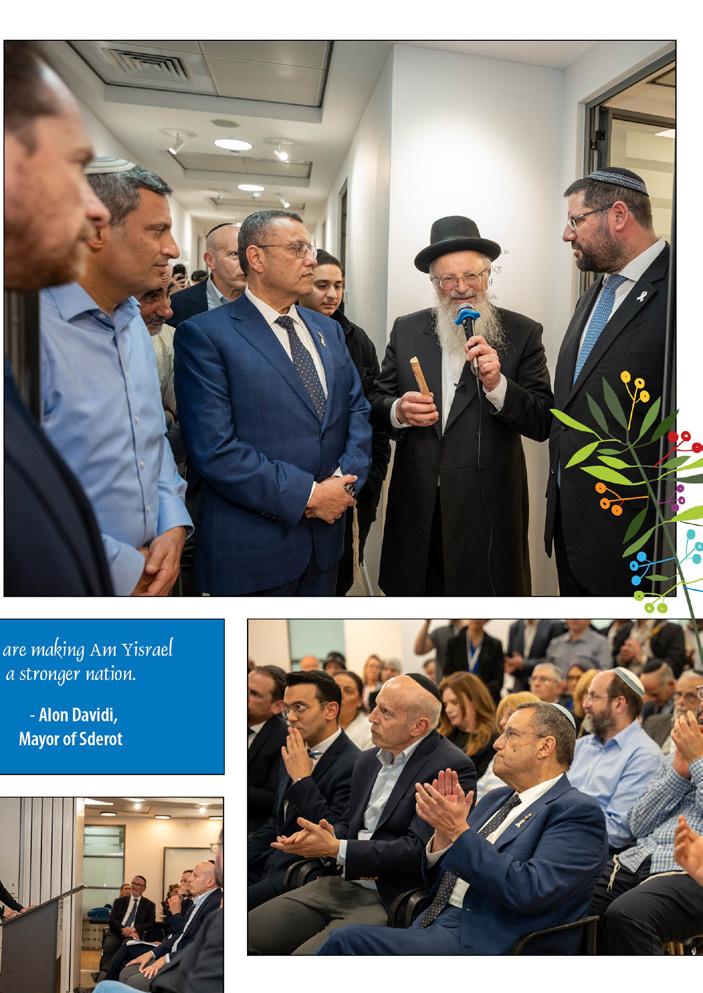
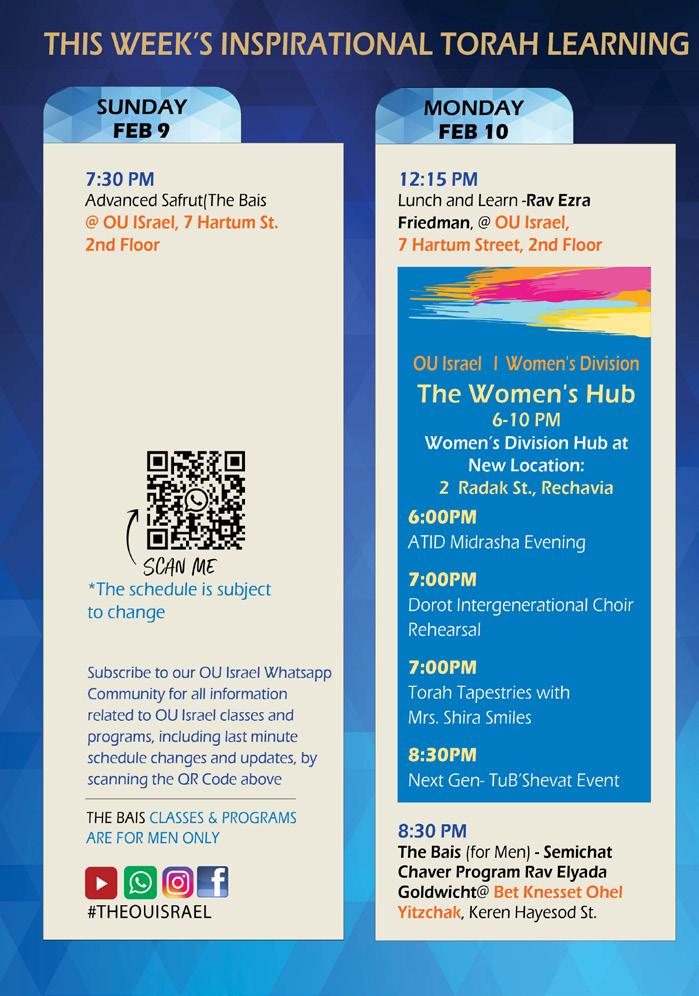
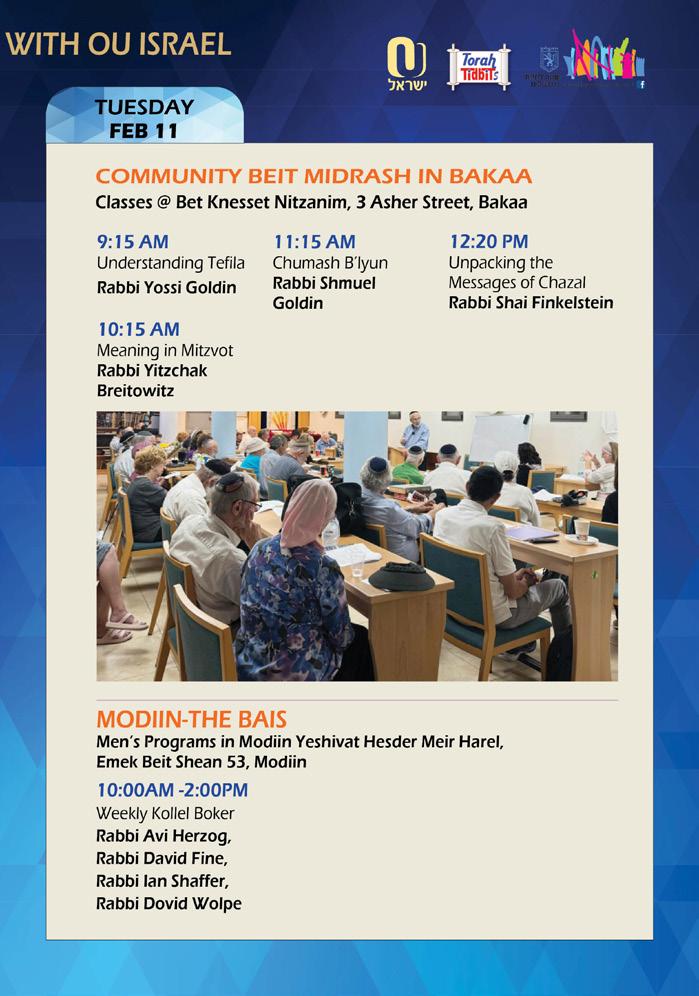
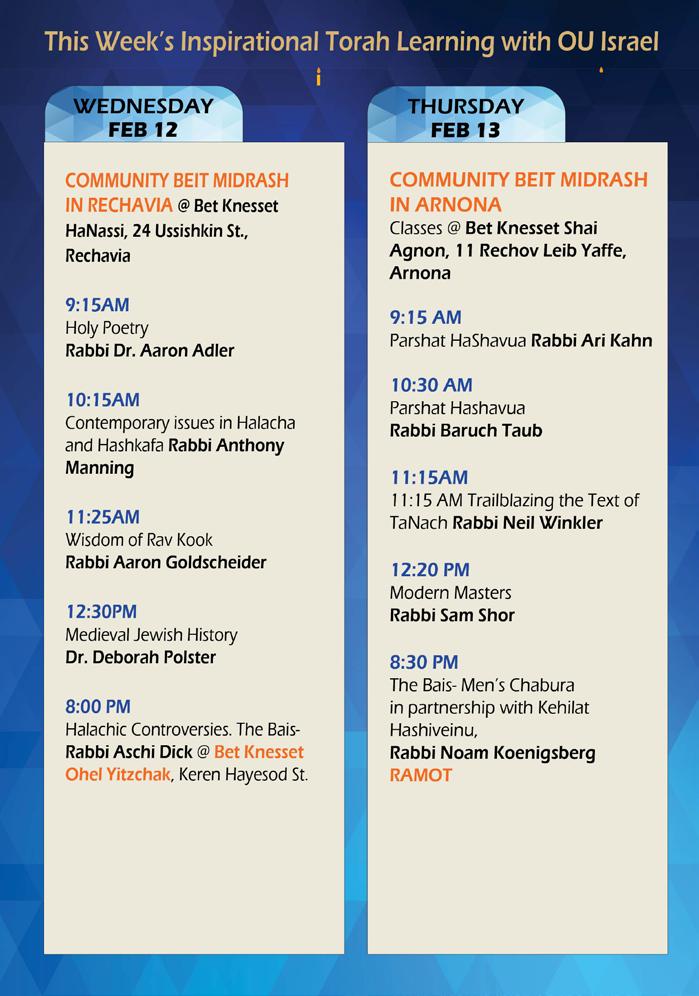



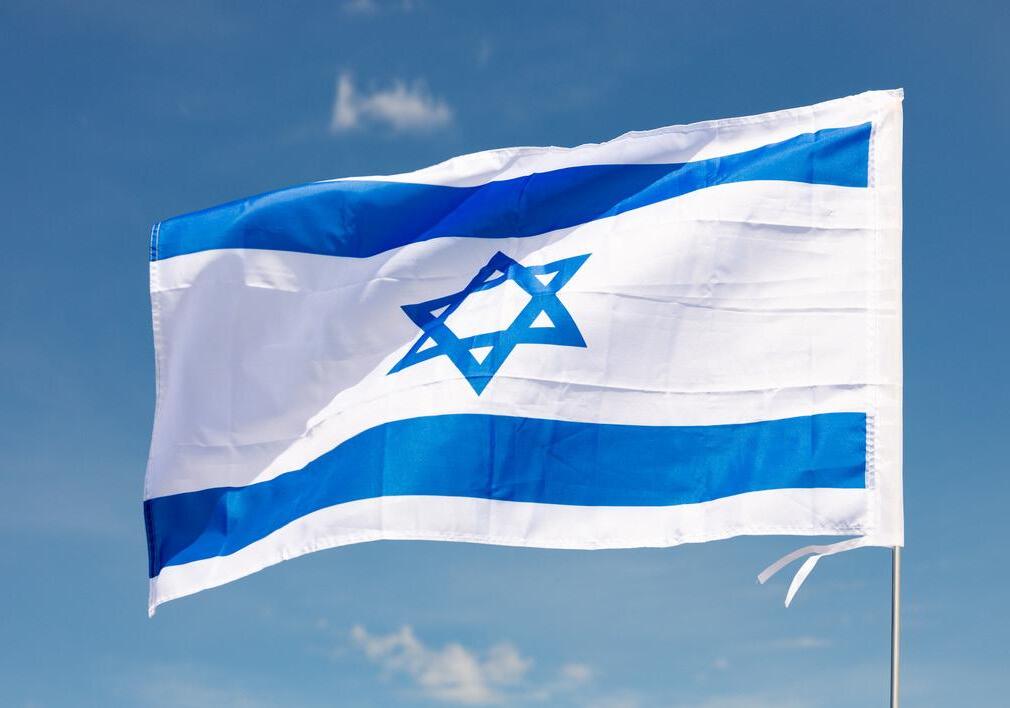
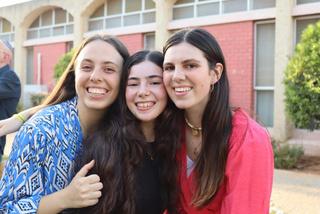
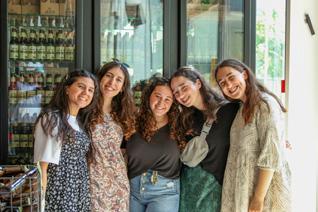
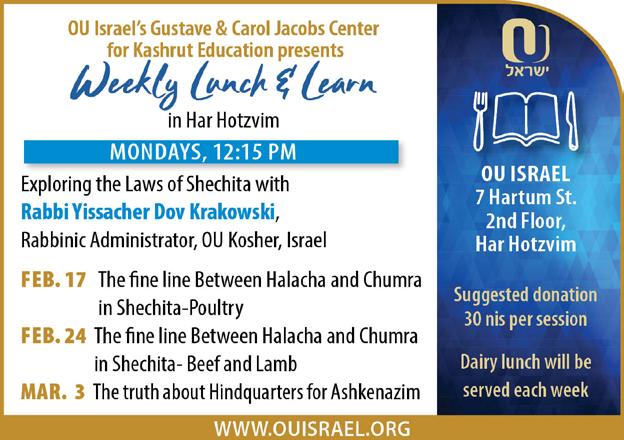

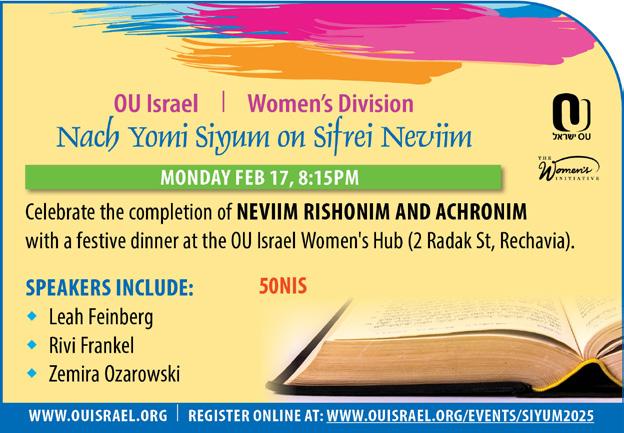
“Turning Despair into Hope”
www.yeshezra.org
Director: Menachem Persoff

THIS WEEK: Please help a single mother, a victim of abuse, and her teenage son, a victim of the Nova massacre, both in a desperate financial and mental state.
Website: www.yeshezra.org
Bank Transfer: Mercantile (17), Branch 642, A/C 79747843
Send Asmachta for receipt
Checks: “Yesh Ezra,” POB 31476, Romema, Jerusalem
Credit Card: Sara – 077-820-0196 / 058-530-9161 Sun-Wed (10:00am-14.30 pm)
Tax benefit for donations as per section 46a of the Israeli tax code
Inquiries: Menachem Persoff 050-570-1067 | menpmp@gmail.com
and Worldwide Starting at $40 sales@1unisim.com Call 077-400-3199 or USA 718-715-0001


HY”D
Yeshayahu teaches us ימע ימי ץעה ימיכ. If you want to understand the Jewish people, first look at the tree. From its deeply hidden roots up to its tall branches and fruit, the tree symbolizes our heritage and identity, faith, strength and perseverance, connection to our Land and to our Torah.
In Israel, planting fruit trees is not just an act of cultivation -it is an act of commitment and connection to settling the land, part and parcel of mitzvat Yishuv Haaretz. Fruit trees remind us of our deep bond with the soil, a connection that’s both physical and spiritual. In our garden, we have three fruit trees, a deliberate choice that never crossed our minds during our years in America, where our garden had five times the space. But here in Israel planting fruit trees feels like an extension of our identity, a tangible expression of our commitment to the mitzvot and to the land itself.
Even moving our once baby lemon tree within our garden required meticulous attention to the halachot- laws so intricate and interconnected, they highlight the sanctity of the seemingly mundane act. This process wasn’t just about gardening. It was about preserving the life of the tree and the mitzvot involved.
The Jewish people are like a tree. Just as a tree’s stability and strength come from its hidden roots, the deeper and more nourished they are, the stronger the tree becomes, so too our roots. We are nourished by Torah and mitzvot, anchoring us firmly in the soil of our heritage. We grow upward, striving to connect with Hashem, despite the challenges and forces that try to pull us down.
On my street, there’s a pomegranate tree that grew in the most unexpected way. A fruit from someone’s tree in their private garden nearby fell onto the public area, decomposed, and sprouted. Over time it transformed from a seedling into a mature tree, now producing its own fruit. The odds of this happening were slim yet it flourished. A tree teaches us patience, perseverance, resilience and faith. Its fruits don’t appear immediately and its success isn’t guaranteed. Its growth is slow and steady. Will it bear sweet, juicy fruit, or will it remain barren? Will it survive harsh or extreme temperatures or high winds that sway its branches or break them entirely? Even when its branches are bare or its fruits are missing, the tree doesn’t give up. It stays true to its mission continuing to grow upward, defying
A tree’s success isn’t measured in a single season. It’s a process that spans years, sometimes even generations. In the same way, the strength of our nation is found in our ability to think beyond ourselves, to plant seeds for the future, build for the next generation, and to trust that Hashem will guide us through every stage of growth.
Our history is one of resilience. Like the tree that withstands storms and drought, our nation has endured exile, persecution,massacres and destruction. And yet, we continue to grow. Even when our branches are broken and fruits are missing, we remain steadfast, loyal to our purpose, and determined to fulfill our mission of continuation and growth.
The Airleys have built Beit Binyamin, a retreat center in Tzfat for those directly affected by the war. Soldiers, Zaka members, security forces, bereaved families and widows can come for respite, relaxation and rejuvenation. For more information and to donate, visit Beitbinyamin.org gravity, and reaching towards the heavens.
From Shavuot, a festival of harvest, to Sukkot, a holiday of gathering of the crops, our festivals revolve around the agricultural calendar. For centuries, Jewish farmers relied on rainfall, looking heavenward for sustenance and placing their trust in Hashem. Today, with technological advances like desalination, it’s easy to forget the source of all these blessings. Just like the Iron Dome, technology and antibiotics, it is incumbent upon us to look beyond what’s right in front of our eyes and to remember that these modern-day miracles are gifts from Hashem.
It’s no coincidence that Binyamin planted his own vineyard on erev Sukkot in Neve Tzuf right before the war broke out, mere weeks before he was killed. While Binyamin loved good wine, he planted not for the grapes but for investing and connecting to the Land, with an unadulterated love and desire for the Land to flourish and produce.
I often say: We didn’t bury Binyamin. We planted him. Though he is no longer with us physically, his roots continue to deepen and spread, his trunk grows taller, and his sweet fruits keep producing—well beyond the physical capacity he had in this world.
So, if you want to understand the Jewish people, look to the tree. See its roots, its branches, its fruit—and its unwavering commitment to continue and grow. Like the tree, we are deeply connected to the Land, nourished by faith, and always reaching toward the heavens. This is our story, and it always will be.


MRS. LEAH FEINBERG
OU ISRAEL FACULTY
The Bnei Yissachar notes that the primary source for the holiday of Tu B’shvat, the mishnah in Rosh Hashanah, calls the holiday “Rosh Hashanah La-Ilan”, New Year of the Tree, in singular, rather than the more familiar “Rosh Hashanah La-Ilanot”, New Year of the Trees. He offers two explanations for the irregularity: First, the Sages are hinting to the custom of davening on Tu B’shvat for an etrog that will be especially mehudar. Thus ‘tree’ in the singular, in reference to the single tree mentioned in the Torah in connection with the fulfillment of a mitzvah.
Secondly, the numerical value of the word Ilan is 91, which is equivalent to the combined value of two names of Hashem, the name of Adnut and the name of Havayah.
The Shem MiShmuel explores the significance of the latter explanation. Hashem’s attribute of Adnut is manifest in this world, while Havayah represents eternity. In choosing to express the New Year of the Trees in singular rather than plural, the Sages were hinting to man’s role in unifying these aspects
of Hashem.
The tree is that which connects the fruit to the ground. The Torah compares man to a tree, since in essence, man connects heaven and earth; his body is taken from the earth while his soul is divine in origin. Every mitzvah we perform serves to connect the upper and lower worlds, the realms of the infinite and the temporal, infusing the physical world with holiness. Furthermore, the spiritual realm mirrors the natural world. Just as a tree is nourished by the rain, we are inspired by the word of Hashem to grow and be productive, to elevate the mundane to spiritual significance.
As the rainy season draws to a close, Tu B’shvat marks the transition from the first third of the year to the second. In the first third of the year, we draw inspiration from the holidays of Tishrei, building resources of wisdom and awakening.
The thirds of the year parallel the human body, in which the nexus between the first and second thirds is the heart. Tu B’shvat initiates a period of the year in which we translate the wisdom and inspiration acquired in the first third of the year into heartfelt active service of Hashem as we progress through the Four Parshiyot read in the month of Adar, the holidays of Purim and Pesach and the days of Sefirat HaOmer leading to the Receiving of the Torah.
It is for this reason, concludes the Sochatchover, that we do not recite Tachanun on Tu B’shvat. We might think that Tu B’shvat
marks merely an agricultural milestone. It seems to celebrate a natural phenomenon, not a miraculous event or even anything specific to the Jewish people. However, as we have seen, Tu B’shvat is a day of rejoicing in our service of Hashem, as we move toward the service of the heart. On this day we experience spiritual rejuvenation and serve Hashem with the warmth of Spring rather than the cold of the intellectual winter, with intent and enthusiasm rather than out of habit and routine.
The month of Shevat is considered especially conducive to the renewal of comprehension and commitment in Torah study, as this is the time period during which Moshe Rabbeinu delivered his “Last Lecture”, reviewing and reinforcing the teachings of the Torah to the Jewish people before his death on the seventh of Adar. May we merit to feel the rekindling of enthusiasm in our own study and practice of Torah in anticipation of the coming redemption.
Mrs. Leah Feinberg is a master educator who taught at the SKA High School for Girls in Hewlett for twenty-one years, also serving as Tanach Department chairperson and New Teacher Mentor. Leah is currently on the faculty of the OU Israel Center and has taught in all three cycles of the OU Women’s Initiative Nach Yomi program




New luxury Building, 5 rooms, 125 sqm, Balcony 9 sqm, Sukkah, Parking, Amazing view, Tramway 4.200.000 NIS
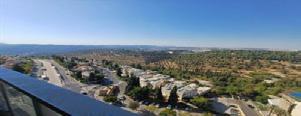
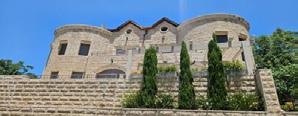
RAMAT SHARET - BAYIT VEGAN
Magnificent Unique House, 320 sqm, 10 rooms, 2 rentals units, View Outdoor 100 sqm, Sukkah, Parking 9.990.000 NIS
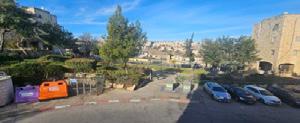
GILO - INVESTMENT
3 rooms, 70 sqm, first floor, Sukkah Balcony, Pinoui Binoui will receive 4 rooms new Building 1.890.000 NIS

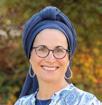
SHOSHANA JUDELMAN
I grew up hearing a story about a young child who immigrated to America after the war. As a treat upon arrival in this new world, she was given a banana. Since she had no previous experience with bananas, the girl didn’t peel it before taking a bite. The banana tasted bitter and unpleasant, and she resolved not to eat one again.
Obviously if she had known to look deeper, to seek the delicious fruit inside the peel, her experience would have been a totally different one.
The Hebrew word for peel is kelipah. Kabbalah and Chassidus call this world a world of “kelipah” because although Hashem is constantly creating it and, therefore, putting G-dly energy into everything, this world hides G-dliness like a peel conceals the fruit.
Without understanding that there is a deeper reality, we can experience the world as a bitter, unpeeled fruit, getting caught up in what the media tells us, falling into despair over world events, and feeling an overwhelming sense of disconnection and fear.
The Mishna tells us that Tu B’Shvat is the
day that the sap begins running in the trees. It is not the day that the flowers begin to blossom, or on which the leaves appear, it is the day the trees begin to renew their energy, and it happens beyond our eyes, deep inside.
Tu B’Shvat reminds us that there is a G-dly reality that exists beneath the surface, and it pushes us to look deeper.
The students of the Baal Shem Tov teach that Hashem’s hiddenness is only for the purpose of us looking for Him. Like a parent playing hide-and-seek with their child, Hashem “hides” Himself in order for us to seek Him out.
In the words of Rebbe Nachman,
When a person beseeches and seeks Hashem and asks “Where is Your Place of Glory?” the very questioning causes a return and an ascent to Him.
The seeking brings the connection.
Because while the world conceals Hashem, it also reveals Him. It is only through His creations that He enables Himself to be experienced. As the Midrash teaches in Beraishis Rabbah:
like the snail (or grasshopper) whose garment is an intrinsic part of him
On one hand, the shell conceals the snail. On the other hand, the shell is the vehicle by which the snail exists and shows up in this world. The very hiddenness becomes the vehicle of revelation.
As long as we keep seeking.
Reb Boruch Medzhibuz’s grandson once came to him crying. The boy was playing hideand-seek with his friends but after waiting in his hiding pace for a long time, the boy came out and realized that his friend had stopped searching for him and had gone home.
Reb Boruch read a deep Torah in the boy’s words. He said that Hashem also experiences this kind of broken-heartedness when we give up and stop searching for Him.
Tu B’ Shvat draws the energy of renewal into the world, nurturing hope and emunah in all of us, enabling a deeper understanding of Hashem’s hiddenness and giving us koach to keep seeking Him.
May Hashem bless each one of us to tap into the nourishing energy of Tu B’Shvat, to break through the bitter barriers of concealment by eating fruits with peels and fruits that we have to peel in order to eat. And with every bite, may we internalize the sweet knowledge that Hashem is inside of everything - even if we can’t see Him.
Shoshana teaches Chassidus for the Shirat David Community in Efrat as well as in Jerusalem for Midreshet Rachel v’Chaya and Shiviti Women’s Institute. She is a guide in Poland with JRoots and co-leads inspirational trips to Ukraine and around Eretz Yisroel. Shoshana has also been a guide at Yad Vashem since 2014.


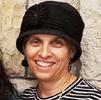
BY RAKEL BERENBAUM
RAKEL BERENBAUM CONTRIBUTOR, TORAH TIDBITS
Our parsha begins with God telling Moshe to tell Aharon’s descendents, the Kohanim, that they are prohibited from becoming tamei – impure. They must not participate in the burial of most dead people “lnefesh lo itama b’amav” (21:1).
In Israel, Tu B’shvat has become a fullfledged holiday, with advertisements reminding us what to buy for the TU B’SHVAT “seder”. It wasn’t always like that. It’s true it is called a Rosh Hashana, and is listed in the Mishna with three other new years (for judging people, for animal tithes and for kings’ reigns). Yet it wasn’t designated as a holy day.
Michal Silverstein, MS
1st of Elul? We don’t do anything special on the new year for animals, but there’s all this fanfare around Tu BShvat.
The Rabbis chose the 15th of Shvat as the “new year” for trees, the cutoff date between one tree year and the next. This way a person can know when he harvests his fruits if he must give maaser Sheni (years 1, 2, 4, 5 after Shmita) or maaser Ani (years 3 & 6).
We all know that dealing with the dead is a very important mitzvah of chesed so much so that the person who is occupied in burying the dead is exempt from other mitzvoth even from wearing tefillin, saying Shema and davening. It is one of the ways that we follow in the footsteps of God and do the mitzvah of ‘Vhalchta bdrachav” (Dvarim 28). So it seems strange that the Kohanim would be prohibited from such an important mitzvah.
Rav Eliyahu Ki Tov in his book Sefer Hatodaa asks, “Why is this “Rosh Hashana” different from the one for animals, on the
One reason is that the Kohanim need to remain pure so that they can do their important work in the Mishkan or Temple. Coming in contact with the dead would make them impure and then they wouldn’t be able to enter the Holy places and wouldn’t be able to do their work – so when there are other people who could bury the dead person it is best if they do it.

The Oznaim LTorah brings another reason. He says it is important for people to
There could be a historical answer to the above question that has significance today. Throughout the exile, the Jews suffered and were expelled from many countries. Abarbanel (1437–1508), a Tanach commentator, was also a statesman and financier in Portugal and Spain. He tried to use his high position and wealth to annul the edicts against the Jews, but he too was expelled with his fellow Jews. He wrote in his commentary on Yeshayahu (43) “God awakened the Kings of Spain to expel the Jews from their lands in order for them to set their path towards the land of Israel”. Abarbanel saw a spark of hope in the horrible situation. Although the Jews were forced to run away some Rabbis such as the Beit Yosef and Harav Beirav, made their way to Israel, settling in Zefat.
Depressed from the destruction in Europe, perhaps the day of Tu B’shvat in Israel brought them some hope. The Ashkenazim and Sefardim adopted the minhag to eat fruits and the Mekubalim even established a whole “Seder” Tu B’Shvat to eat 30 fruits from Israel. They believed that the growth of
care for the dead and to go to the home of a mourner because all mortals will die one day and that way we can remind ourselves of our end and improve our behavior. He says that the Kohanim don’t need this reminder because they are always living in the shadow of death. Their job puts them on the tight wire between life and death every day since they work in the presence of God. If they come to the Holy areas to do their work in inappropriate ways, ( such as drunk, impure, without their special garments, without washing their hands and feet…) the punishment is death. This we saw with the death of the two son’s of Aharon, Nadav and Avihu, “b’kirvatam lfnei Hashem” (10:1). They live with a constant threat of death so they are more apt to be careful with their behavior. Yet there are a few exceptions to this prohibition, when the Kohanim are actually obligated to deal with the burial of a dead person, such as for the very close relatives that are listed in verses 21:1-3 and for a dead person who has no one else to bury them. There are times in everyone’s life, even the Kohen’s, when they are confronted with death and they must rise to those occasions as well. The Rambam learns from these verses the general mitzva for all Jews, not just kohanim, of aveilutmourning. The Torah does not want us to ignore tragedies that may befall us. Crying and mourning are normal stages when
fruits was a sign of the future Geula as it says (Sanhedrin 98a) “ You have no more explicit manifestation of the end of days than the verse: “But you, mountains of Israel, shall give your branches, and yield your fruit to My people of Israel, for they will soon be coming” (Yechezkel 36:8). When produce grows in abundance in Israel, it indicates that the Mashiach is coming soon. Tu Bshvat, the new year of the trees in the middle of the winter, and the wealth of fruits in Israel awakens this hope. Hence it is “celebrated” with such vigor also today.
For those reading who still live abroad – this year, on the “New Year” for trees, is the perfect time to make a “New Year’s resolution” to joyously plant yourselves here in Israel.
Let us all eat the abundance of fruits here in Israel together and pray that they are signs that Mashiach is very near.
Here’s a simple chicken recipe with some of the 7 species of Israel, and almonds that are the first trees blossoming now.
• 1 chicken, cut into 8 pieces
• 1 tsp sweet paprika
• 1/2 tsp hot paprika
• 1 tsp salt
• 3 tablespoon olive oil
• 50g almonds, chopped
• 50g pecans, chopped
• 10 dates, pitted and cut in quarters
• 1 onion
• 2 cloves garlic, peeled and sliced
• 1 red pepper, seeded and sliced
• 2 green sour apples, cubed
• 1 sweet potato, cut into cubes
• 1/4 tsp curry
• 1 Tblsp flour
• 1/2 cup white wine
• 1/2 cup water
Preheat the oven to 180 C. Dip chicken pieces in oil. Combine paprika with salt and smear on the chicken pieces. Place them in a baking dish. Bake for about 30 minutes till browned. While it is baking in another pan sauté the onion till transparent. Add the pepper and garlic and cook for about 5 minutes, stirring occasionally. Add the flour and mix well (to prevent lumps). Add the wine, water, apples, sweet potato, curry and leftover paprika. Cook for another 10 minutes. Sprinkle the chopped nuts over the chicken. Pour the sauce over the chicken.
Bake for an hour. Add dates on chicken and bake for another 20-30 min.


Beautiful duplex apartment in the heart of Ein Kerem, 125 sqm, 4.5 rms, 1.5 baths, large rooms with domed ceilings, balcony with view over the neighborhood, close to shops, cafes and public transportation, well maintained condition, lots of potential!
New lower price: NIS 3,800,000


simchat shmuel
BY RABBI SAM SHOR DIRECTOR, TORAH INITIATIVES, OU ISRAEL
BY RABBI SAM SHOR
Program Director, OU Israel Center
On Thursday of this coming week, we will commemorate Tu B’Shevat, referred to in the Mishna as Rosh HaShana La’Ilanot- The New Year of the Trees.
As a child, I never really understood this idea of a new year for the trees. I recall eating fruits, including that very peculiar looking and even more peculiar tasting piece of carob, and remember getting those certificates saying that my parents had planted a tree in Israel in my honor on Tu B’Shevat, but that was about the extent of my Tu B’Shevat commemoration.
For many here in Israel today, Tu B’Shevat has become a Jewish “Arbor Day”, when schools typically schedule trips to plant saplings. Of course there is also practical halachic reasoning behind a new year for the trees. Tu B’Shevat has significance in calculating several of the mitzvot hatluot B’Aretz- the many laws regarding planting and harvesting outlined in the Torah for produce grown in Israel.
For many years now, I have contemplated what this idea of a Rosh Hashana La’Ilanot, a Rosh Hashana for the trees is really all about. What are the many familiar themes associated with Rosh Hashana? Self evaluation, reflection, examining and working to better our interpersonal relationships, achieving spiritual and physical fulfillment in our daily lives,etc.- How can these themes be understood within the context of a Rosh HaShana La’Ilanot?
There is a beautiful Chasidic teaching from Rebbe Yisrael of Chortikov zy’a, which I feel really clarifies the parallel to be drawn
between our more well known Rosh HaShana in Tishrei, and Tu B’Shevat.
“When a person takes a fruit in his hand, he must contemplate how it is that this fruit exists. Seeds are planted in the ground, and the seeds begin to decay, and just as it appears to be disintegrating it gains strength, and begins to grow and becomes a tree and produces fruit. So too, a human being, even if capable and of good character, involved in Torah and mitzvot, whenever he acts with haughtiness, then man loses his equilibrium.
Only when a person recognizes and works at improving this deficiency can they begin to grow upwards and be capable of receiving the sparks of holiness, and become a ‘respectable tree.’ And this is the meaning of the verse: ‘... for man is a tree of the field... (Devarim 20:20).’ If a person desires to ascend spiritually to the highest level of humanity, he should look to the trees of the field, and ponder ‘how do these trees continue to exist?’ A tree is planted and remains anchored in the ground, and from this we learn that in order to grow branches that reach great heights, in order to achieve and approach the highest spiritual realms, we must begin grounded, anchored in humility...”
One of the great religious personalities of the pre-state Yishuv and early years of Medinat Yisrael, was the Ohalei Yaakov of Tel Aviv, Rebbe Yaakov Friedman, the Admor of Husiyatin zy’a. The Rebbe of Husiyatin, was fortunate to make aliya from Poland, just ahead of the Nazi onslaught, settling in Tel Aviv in 1938, where he lived until his passing
in 1956. Within the Rebbe’s beautiful teachings we not only find depth and inspiration, but are often given a glimpse of this very challenging period in Jewish History.
In a stirring teaching which the Rebbe delivered at his Tu Bishevat tisch, on the eve of Tu BiShevat in 1951, the Rebbe gives us perspective not only on Tu BiShevat as the Rosh HaShana of the trees, but also of the reality of life here in Artzeinu HaKedosha during those difficult formative years of Medinat Yisrael. The Rebbe shared these powerful words:
“ The minhag on Tu BiShevat is to eat the fruits of Eretz Yisrael, but sadly we are unable to fulfill this custom at this time here in Eretz Yisrael, the many fruits for which the land of Israel is praised, are not growing here at this time. To our great distress, during the many years of galut, Eretz Yisrael has ceased being a land flowing with milk and honey. But now, with the miraculous establishment of Medinat Yisrael, it would seem that now is the time that the Land will soon once again return to being that eretz zavat chalav udvash...
...Indeed these great revelations of divine kindness that Hashem has revealed to us, are just the very beginning of our redemption, the salvation we continue to long for each and every day. The siman(sign), that indeed that geula is coming closer, will be when the land once again returns to be an eretz zavat chalav udvash. When the land begins to fully blossom once again, and produce many varieties of sweet fruits, then we will know that our redemption is coming closer...”
Baruch Hashem, in our day, more than seventy years since the Rebbe uttered these poignant words, Eretz Yisrael has indeed returned to being that eretz zavat chalav udvash. In the famous words of our beloved
and revered teacher Rabbi Dr. Sholom Gold zt’l, “If you want to speak to G-d, go to the Kotel, but if you want to see Him, go to Shuk Machane Yehuda.”
Yehi Ratzon, as we reflect on the Rosh HaShana La’Ilanot, may we heed the beautiful advice of the Rebbe of Chortikov zy’a, and may we merit to see the geula shleima, which this powerful teaching from the Ohalei Yaakov zy’a suggests, is just around the corner.
Shana Tova, Moadim Lisimcha L’geula Shleima!


Arnona 7,800,000 NIS
Garden apt, 175 sqm, garden 190 sqm Namhum 050-7225694
Herzog Street 2,650,000NIS
4R, 65 sqm, 1st floor small yard, fully accessible Orit 050-3362306

Rasco 4,200,000 NIS

Arnona 4,200,000 NIS
Garden apt, 75 sqm, garden 95 sqm Nahum 050-7225694
5R, 110 sqm, view, Sukka balcony, elevator Rachela 052-6503348





• Curtains & draperies
• Designer curtains
• Venetian & Woven wood blinds
• Blackout, Vertical, Roller, Roman & Pleated shades

www.ashleywilde.co.il
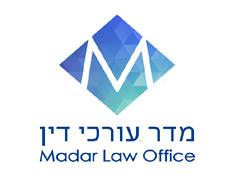
Orit Madar, Adv. Family Law and Mediation Divorce, Child support, Custody Inheritance & Wills
Yariv Madar, Adv. Bodily Injuries, Medical Malpractice Civil Litigation





10 Hillel St , Jerusalem | 36 Dam hamkabim st , Modiin 02-6255592, 050-3202909 Madar@netvision net il


(Hand and Machine)


Organic: Whole Wheat, Whole Spelt, GF Gluten Free Oat, Whole and Regular Wheat

hillel.leib@MatzaMan.co.il NOW: Home delivery throughout Israel.








Walking down King George St. in Jerusalem and want a cold bottle of water? Come help yourself to a bottle at 52 King George.
In loving memory of Yoni’s wife Tziporah a"h, a true Eishes Chayil, always full of chessed, kindness and laughter, and brought life and strength to so many people, that she touched! She was like Aron, who loved peace and pursued peace.

Yoni thanks Hashem for having the opportunity of having Tziporah in his life, to learn of her caring, patience and happiness, to overcome her challenges. May Tziporah's Neshama be a light onto the world, in a time of darkness, and may her Neshama shine to Gan Eden. Yoni misses Tziporah with tears in his eyes, as Hashem gave him a gift, a crown jewel, now he returns her to Hashem. With thanks and Toda. Love, Yoni
To help refill the supplysend tax deductible donations for Be’er Tziporah a"h Bottled Water Gemach to Chabad of RechaviaRabbi Yisroel Goldberg email Rabbi@JerusalemChabad.org 02 800-1717
www.JerusalermChabad.org/DonateShekels





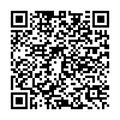
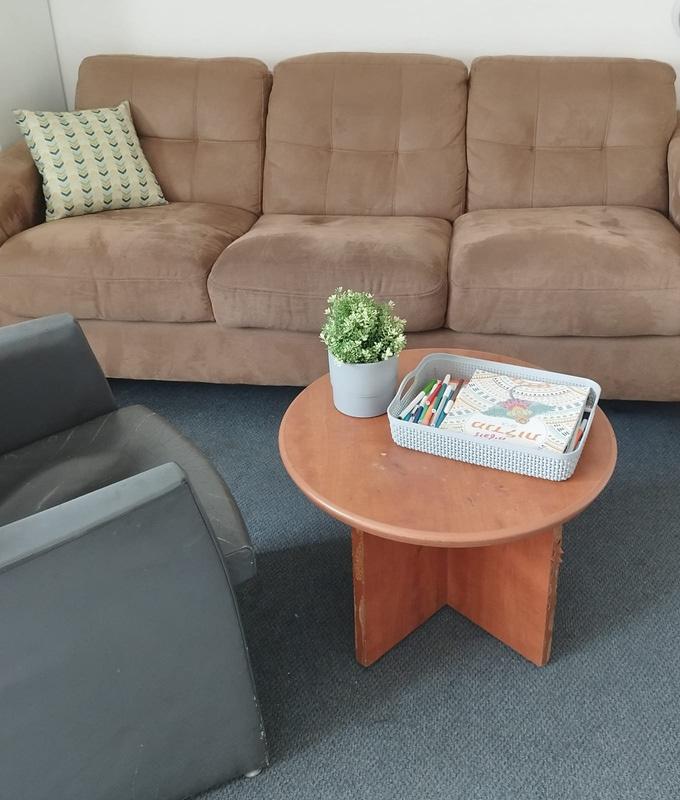



RABBI
RAM YESHIVAT HAR ETZION
MAGGID SHIUR ALL PARSHA AND ALL DAF, OU.ORG
The opening of Parshat Beshalach paints a vivid and triumphant picture of yetziat Mitzrayim. We were guided through the desert by an שא דומע or a heavenly pillar of fire at night, which seamlessly gave way to an דובכה ןנע or a protective cloud during the day, ensuring that we were never exposed for even a moment. Marching through the wilderness with our newfound freedom, we advanced boldly toward Har Sinai, ready to embrace the word of Hashem. An unstoppable force, we stretched our hands heavenward המר דיב ואצי לארשי ינבו —both literally and metaphorically—celebrating our triumph after enduring two centuries of an Egyptian nightmare.
We were also armed and ready to face any adversaries we might encounter in the open desert. The Torah uses a word rich with
meaning to describe our preparedness: ”םירצמ
The word “םישומח” literally means “armed with weaponry.” However, Chazal offer an additional interpretation, drawing on the similarity between “םישומח” and “שמח,” the number five. They assert that only onefifth—or 20%—of the Jewish population actually departed Egypt. The remaining 80% were annihilated during the plague of Choshech. These individuals were deemed undeserving of redemption, yet their deaths occurred discreetly under the cover of darkness, sparing the nation the embarrassment of a more public tragedy.
Thus, the three million Jews who left Egypt represented only a fraction of what had been a population closer to 15 million, enslaved under Egyptian oppression.
This bold and challenging midrash is difficult to comprehend. True, we had descended into paganism, and much of our heritage had been forgotten. But could Hakadosh Baruch Hu truly eliminate 80% of His chosen people?
PERL
Phone/Whatsapp: 972-52-4239880
Email: kalavi.yakum@gmail.com
As with any midrash, it is unclear whether this account should be read literally or metaphorically. Perhaps Chazal spoke in hyperbole, underscoring that not every Jew joined the exodus without implying that 80% perished. Furthermore, in general Chazal speak with many voices, and it is possible that this account reflects one perspective rather than a universally accepted view.
This unsettling midrash challenges our
deep-seated belief in the sanctity and potential redemption of every Jew. Even if we do choose to read it literally, it is easy to contextualize this midrash as referring to an ancient, murky and formative moment in our history. For reasons beyond our understanding, Hakadosh Baruch Hu sought to purify our ranks, selecting only those whose faith had withstood the crushing pressures of two centuries of Egyptian bondage. At that delicate and pivotal moment, as the genesis of our nation unfolded, such selectivity was deemed essential.
This midrash cannot possibly describe our current situation. It cannot be that in future redemptions 80% of our people will perish!! Astonishingly, some do view this midrash as a paradigm for future moments of Jewish redemption, particularly as a lens through which to understand our current and final redemption. In our world, a significant majority of Jews—approaching 80%—do not adhere to Torah and mitzvot in their classical form. For many this midrash foreshadows the redemptive future. According to this view, Moshiach will selectively redeem those who remain aligned with classical mesorah, while others may tragically be excluded from the redemptive arc.
For those, like myself, who do view the final redemption as inclusive rather than selective, how can we reconcile our current condition with our visions of a united and comprehensive redemption? What role do secular Jews play in the unfolding of Jewish destiny? Why won’t our 80% perish just like the first 80%? Assuming, for a moment, that this midrash about the 80% in Egypt should be read literally, what distinguishes their tragic fate from our present reality? Why will every Jew be embraced in the final redemption rather
Alan Sussman, “The Collector”
than fading into the dustbin of historical irrelevance? What ensures that every Jew will be redeemed?
Chazal describe a tinok shenishba—a Jewish child taken captive and raised entirely outside of Jewish life—as free of religious culpability or punishment. It is entirely reasonable to view Jews who have drifted from classical religious practice in this light. After two thousand years of exile and displacement, our collective religious commitment had waned. Confronted with relentless hatred and discrimination, many Jews had their faith stripped away from them.
In the modern era, two monumental challenges have tested our endurance: a temptation and a trial. First, after generations of marginalization and scorn, Jews were suddenly welcomed into general society, offered positions of influence and affluence. For many, the price of admission was the abandonment of faith and religious observance.
The second challenge was not the enticement of modernity but the relentless scourge of antisemitism, culminating in the Holocaust and persisting in new forms today. Confronted with hostility, many found it too difficult to maintain their Jewish identity and instead sought refuge in assimilation.
Of course, this halachic abandonment cannot be entirely excused, but given the immense pressures of the past two thousand years, it is reasonable to assume that our 80% will be granted leniency and included in the final redemption.
Secondly, unlike the Jews of Egypt, today’s Jews descend from ancestors who endured the odyssey of Jewish history. The Jews in Egypt were not all direct descendants of our forebears—many were monotheistic converts who joined our people. The seventy souls who descended to Egypt did not naturally expand into a population of fifteen million.
By contrast, every Jew today is the heir of ancestors who sacrificed to preserve our traditions and build our legacy. It is difficult to imagine that their future will be severed, that their descendants will be cut off from the destiny their forebears forged. History is intergenerational—we shape our own future, but we also live in the shadow of our past. In this light, even Jews today who may not observe every mitzvah remain tethered to the spiritual legacy of their ancestors, and presumably, this binds them to Jewish destiny.
MODERN DAY CLOTHING AND LANGUAGE



aspects of Jewish identity. Chazal describe the Jews in Egypt as having lost all religious commitment, retaining only their Jewish names, language, and dress. This description refers to the Jews fortunate enough to leave Egypt. They fell into pagan culture and religion, yet their unwavering commitment to Jewish identity justified their redemption.
It seems that a strong national Jewish identity offers a robust foundation for religious revival. Those Jews who held onto their Jewish identity were later able to stand at Sinai and undergo religious rehabilitation.


In our current era, Jewish identity extends far beyond just clothing and language. There are traits and values deeply associated with our people, and many Jews, though not observant in the traditional sense, live these traits as part of their Jewish identity. These committed Jews are, metaphorically, maintaining the language, dress, and names of Judaism, and thus deserve to be included in the final redemption. For example, for many being a Jew represents morality, ethics, and tikkun olam, and they live these values deeply as a core part of Jewish identity. Like so many who actually left Egypt, they have abdicated ritual and in many cases theology, but are still dressed as Jews and speak as Jews.












Of course, the final and most significant difference between the 80% of Egypt and the modern 80% is the Land of Israel. The Jews in Egypt had never lived in Israel, but we, baruch Hashem, have returned to the Land. For Jews across the globe, the Land of Israel and the emerging Jewish state are at the very heart of their Jewish identity, anchoring them to Jewish destiny. In particular for non-Orthodox Jews living in Israel, their dedication to defending
our Land and building our state serves as a profound expression of Jewish identity.
Identification with Israel will one day help restore deeper religious commitment. After all we have endured over the past year and a half since October 7th, can anyone legitimately question whether Jews, so dedicated to their Land and country—both those living in Israel and even those living outside—are included in Jewish destiny?
In the tochacha of Parshat Bechukotai Hashem promised us that He would redeem us from Exile, implying that redemption would come even if we don’t deserve it. יתרכזו יתירב
—He would recall the lives of the Avot and redeem their descendants.
But what about those who may not reflect the Avot in their lifestyle? How will they be redeemed? The Torah provides an answer to this haunting question:
Those who may not be included in the covenant of the Avot are still included in Jewish destiny because they are aligned with our Land, our people, and our history.
Our final geulah will not hover at 20%, but surge toward 100%, embracing all who are bound to the soul of our people.


Rabbi Taragin’s newest sefer entitled “Reclaiming Redemption Deciphering the Maze of Jewish History (Mosaica)” is now available at: www.reclaimingredemption.com and in bookstores.
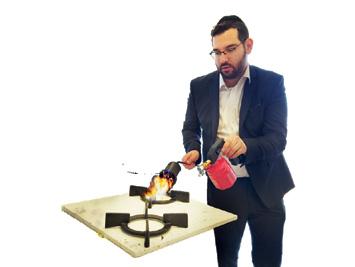
New on the market in Baka.
4 rooms with garden in use, 100m, elevator, joint parking, needs renovation. 3.67m shekel
Great opportunity to buy in a new building starting construction in Arnona close to Baka. Great prices and the price isn't linked to inflation! Starting at 2.55m shekel For Sale in Neve Yakov, Moshe Sneh Street. Spacious 3 rooms, renovated, A/C, 3rd floor with views, next to a large park and a Shul. 1.79m shekel

BY REBBETZIN DR. ADINA SHMIDMAN
DIRECTOR, OU WOMEN’S INITIATIVE

In this week’s Haftorah, Shirat Devorah, we read the song born from the depths of adversity and the heights of Divine deliverance. Devorah and Barak sing, אוהה םֹויב רֹמאל, on that day, saying. The word “רֹמאל” (saying) seems superfluous. Yet, it hints at a profound truth: the power of song is not confined to the past. It echoes forward, inspiring future miracles.
This eternal resonance of song and emunah finds a living reflection in the extraordinary story of Agam Berger. Her narrative is not just a story; it is a modern-day shira, sung not with melodies but with the unwavering notes of faith and courage.
Agam, taken captive by murderers, chose the path of emunah. Through the most horrific conditions, she kept Shabbos, refused to eat non-kosher food and fasted on Yom Kippur with her fellow captives. Upon her miraculous release, she wrote the words, יתרחב
, I have chosen the path of faith (Tehillim 119:30). Agam’s unwavering faith amidst darkness is an eternal zechus for our generation.
Devorah sings,
When breaches broke out in Israel, when the people dedicated themselves willingly, bless Hashem. Rav Yonason Eibshitz
explains this with timeless poignancy, noting that the breaches are the external adversities, the trials and oppressions. The willingness is the internal awakening, the surge of faith and dedication amidst those trials. When the forces of external adversity and internal awakening unite, their combined strength unlocks the gates of salvation. Agam Berger’s story embodies this convergence. The Land of Israel was breached on October 7th, and Agam’s next 482 days were marked by captivity, terror, and separation. Yet, within that breach, her internal flame of emunah blazed. Her song of faith is our shira today, inspiring us to recognize that even in the most unimaginable darkness, the light of emunah can shine forth, teaching, uplifting, and we pray, even altering the decrees in Shamayim for the good.
Our journey has always been accompanied by song, woven through moments of triumph and tribulation. Devorah sang in the past, we sing in the present, and we pray for the future song our people will sing, as Yeshayahu calls upon us, שדח
, Sing to the LORD a new song (Yeshayahu 42:10). May we soon merit to sing the song of Moshiach, the song of eternal redemption and peace.







RABBI AARON GOLDSCHEIDER EDITOR, TORAH TIDBITS RAV, THE JERUSALEM SHUL BAKA, JERUSALEM
Editor, Torah Tidbits
The Talmud’s opening story, which appears just one page into Masechet Berachot, relays a tragic description of the sage Rebbe Yossi who prays alone in one of the ruins of Jerusalem. In a miraculous fashion, Elijah the Prophet appears and asks him if he heard anything in the ruin. Rebbe Yossi answered: “I heard a heavenly voice that cooed longingly like a dove and said: “Woe to the children whose sins caused Me to destroy My Temple…and exile them among nations.”
the shul or beit medrash and offer prayers, “God shakes His head and says…Woe to the Father who exiled his children and woe to the children who were exiled from their Father’s table.”(Berachot 3a)
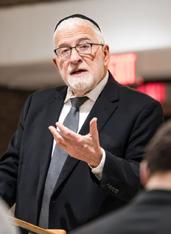
Elijah responded to the Rebbe Yossi, telling him that three times a day, when Jews enter
Near Baka & 1st station
A very unique property!
Half of a semi-detached house close to the kotel, 80 sqm is built with a huge yard & immediate rights to add 200 sqm separate in Tabu.
8.5M ₪
Price dropped!
3bedroom in a Well-maintaine with a huge living room (possibility of 4 bedrooms) high floor, view in all directions. 2 elevators+parking.
4.15M ₪
HAGAI HARIF 050-3231147
Rav Kook, in his Ein Aya, understands this gemara as emphasizing the dwindling stature and influence of the Jewish people after being driven into exile. The reality of exile affects multiple areas: First, great figures like Rebbe Yossi, have seen their influence become limited. Second, service of God, as manifested in prayer and sacrifice, has been diminished by the absence of the Beit Hamikdash. Therefore, the voice of longing can be heard three times a day, corresponding to the three daily tefillot. Finally, all of religious life has been negatively affected. Indeed, every performance of the mitzvot brings forth a voice that mourns the exile.
An outstanding Rabbininc personality living in Israel at the same time as Rav Kook was the eminent sage Rabbi Yaakov David Wilovsky of Sfat, known as the Ridvaz. Among the hundreds of letters of Rav Kook, collected in the volumes of Iggrot HaRaaya, we have a number of them which are the correspondences between these two great rabbininc leaders. Apparently the Ridvaz, at some point, suggested that Rav Kook consider taking a rabbinic position that had
become available outside of Israel. Rav Kook answered his esteemed colleague by expressing his shock at the mere thought of leaving the sanctity of Israel for the “impure air of the Diaspora”:
“I am shocked by your piece of advice for me to leave Israel to the diaspora in order to receive a rabbinical position. Truly, if someone would give me all “the secret treasures of the world” (Bava Metzia 49a) in exchange for one moment of breathing in the holy air of the Land of Israel; or on the other hand, if someone would give me all the silver and gold in the world in exchange for one moment of breathing in the impure air of the Diaspora, I would despise both of them (paraphrase of Shir HaShirim 8:7). (Iggrot HaRaaya 2, p. 154, translation Ari Zev Shwartz, The Spiritual Wisdom of Rav Kook, p. 198)
In the letter cited above, Rav Kook describes the air outside of the Land as impure. In contrast to the sacred air of Israel, air that is found in other countries is spiritually contaminated. Indeed, this notion is to be understood not only in a poetic sense but in actual halachic terms:
The Rambam, in his Mishneh Torah, records the law of a Jew who wishes to become a Nazir outside of Eretz Yisrael. He unequivocally states that one cannot adopt this more elevated stature of Nezirut outside the Land of Israel: “A nazarite vow may be observed only in Eretz Yisrael. When a per son takes a nazarite vow in the Diaspora, he is penalized and obligated to ascend to Eretz Yisrael and observe his nazarite vow there for as long as he vowed” (Hilchot Nezirut 2:21).
Nazir outside the Land of Israel is not found in the Torah, instead it is based on a rabbinic decree that in the Diaspora - its earth and even its air - conveys ritual impurity, and therefore a Nazarite cannot observe his vow there. (Nazir 54a, see Hilchot Tuma’at Meot 11:1, quoted in Chabad.org Hilchot Nezirut Chapter 2, note #64)
GETTING OUT OF GALUT: NIGHT OR DAY?
What time of day did the Jewish people leave Egypt? It seems like the Torah contradicts itself (Devarim 16:1 and Bamidbar 33:3). Did the exodus happen at night or in broad daylight?
The Talmud in Berachot (9a) suggested that both descriptions are true in the sense that the redemption began at night and was only completed the following morning. The people heard from Moshe that they were finally free at night. However, God did not want them to leave just yet. God commanded that they would wait until daybreak, and openly and proudly leave the house of bondage.
Rav Kook elaborated on the difference between the two periods. At night the Jewish people inwardly felt free. They felt an inner joy and a visceral sense of emancipation even though they had not yet actually stepped foot





The commentators explain that the ineffectiveness of observing the status of being a


and Machine)










of the Jewish people leaving Egypt. This was a public event, before Egypt and the entire world. This happened at daybreak. The sun shone and “the Israelites marched out triumphantly. (Sh’mot 14:18). (Ain Aya vol. 1, pp. 43-44)
It is interesting noting that the Torah fixed the celebration of the Pesach Seder at nighttime. It was during that night when the Israelites took to heart that their freedom from slavery was close at hand. Perhaps the profound lesson here is that even before we experience a completely developed redemption we celebrate the significant steps that are bringing us closer to the goal line.
Rav Shay Schachter shared the following story about his father Rav Hershel Schachter in which he learned that his father held off on studying the laws of Tisha B’Av because he felt that the coming of Mashiach and the rebuilding of the Beis Hamikdash could be imminent:
The text that Rav Shay Schachter wrote said precisely the following: “Just got off the phone with my father. I started to ask him a number of questions about the Nine Days that people had asked me in Shul over the past few days. He began crying uncontrollably on the phone and said, “Shay, I really can’t answer these shaylos, I really don’t know these dinim; every year I hold myself back from learning the halachos of Tisha B’Av. I really thought we would have a Beis Hamikdash this year. I can’t bring myself to learn it too much in advance of Tisha B’Av.” (Shared on Facebook by Efrem Goldberg, Aug. 5, 2016)
KRIAH: WHEN THE MOUNT IS IN OUR HANDS
The Halacha rules that one must tear
his garments when seeing the place of the Temple in ruins (Moed Katan 26a and Shulchan Aruch Orach Chaim #561). Rav Yosef Karo, in the Beit Yosef, in discussing the obligation to rip one’s garment upon seeing the cities of Yehudah and Jerusalem in ruins, explained that the meaning of “in ruins” means “under non-Jewish control.” (The Magen Avraham and Mishna Brurah accepted this view).
Rav Zvi Yehuda Hakohen Kook, the eminent son of Rav Kook, explained that the same applies when seeing the spot of the Temple in ruins. Just as “in ruins” means under non-Jewish control regarding the cities of Yehudah and Jerusalem, so too does “in ruins” have the same meaning regarding the status of the Temple Mount.
With the famous call “the Temple Mount is in our hands” at the conclusion of the Six Day Way and the subsequent Israeli control of that area, Rav Kook ruled that there is no longer an obligation to tear one’s garment when seeing the Temple Mount, even though the Temple is still destroyed.
Rav Zvi Yehuda Kook argued that the key point is that the Temple Mount is in our hands, and our inability to build the Temple is not due to the exile. We are in control, but are prevented from building the Temple due to halachic and political reasons. (Sichot HaRav Tzvi Yehidah - Yom Haatzmaut and Yom Yerushalyim, p. 90 and Tal Chermon, Moadim, p. 218)

Rabbi Goldscheider’s most recent OU Press Publication, “Torah United” on the weekly Parsha, can be ordered directly from Rabbi Goldscheider at Aarong@ouisrael.org at a special price for Torah Tidbits readers.







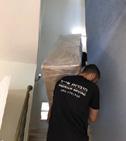







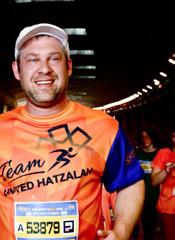





www.angelrealty.co.il
For Sale in Jerusalem
Ramot B: 8 room cottage with option, stunning view
4.990.000 NIS
For Sale in Efrat Dekel: Spectacular 539m² Home ! Features a grand master suite with built-in closets and jacuzzi. Stunning kitchen, spacious dining, and living areas with breathtaking views. Attic includes three bedrooms. Two rented basement units offer great income potential. 8.900.000 NIS Gabi- 0524588716






RAV DANIEL MANN
Rav Daniel Mann
Question: I have questions about lifnei iver (the prohibition of facilitating another’s aveira; we will call the facilitator, Reuven, and the violator, Shimon). Does Reuven violate lifnei iver only when Shimon does the aveira, or when Reuven facilitated the potential aveira? Is Reuven liable for Shimon’s specific sin or is lifnei iver a separate aveira, equivalent for any facilitation?
Answer: The practical elements of lifnei iver are very difficult to apply and, if not applied wisely, could make interaction with not fully observant Jews untenable. Your questions, and our response, address the fundamental basis rather than the practicality; we seek perspective rather than a ruling.
You are correct that while most aveirot are violated at a given time, lifnei iver often includes a serious break, timewise and logically, between Reuven’s involvement and Shimon’s sin. For example, if Reuven sells non-kosher food to Shimon, hours or days may go by before Shimon does the aveira. This is not unprecedented. Some melachot of Shabbat (e.g., cooking, planting) consist of doing an action which brings a result only later. Based on this comparison, it is logical
that lifnei iver is violated immediately. Possibly Shimon’s violation is a condition for Reuven’s retroactive lifnei iver, or perhaps even if Shimon did not sin, Reuven sinned by “placing the obstacle” as the pasuk (Vayikra 19:14) seems to describe.
Shabbat and lifnei iver are different in that Shabbat is violated without the intervention of another person, whereas lifnei iver requires a person to perform the transgression, usually knowingly. Considering the concept of ein shaliach l’dvar aveira (=eslda; one is not culpable for the sin he had his agent do –Bava Metzia 10b), it would be surprising if Reuven is responsible for what Shimon did, thus indicating that Reuven’s sin was the placing of the obstacle. (One answer is that eslda precludes Reuven’s responsibility for the specific sin, but that Shimon’s violation is the culmination of lifnei iver.)
When lifnei iver applies is difficult to define. The baraita (Avoda Zara 6a) says that one must not give wine to a nazir, but this is oversimplified. After all, it is fine to sell a responsible nazir wine; he can bring it home for his family! This characteristic makes it logical that the violation is that if the sin is done, we apportion blame to those responsible (like when one is careless with his ox, which then kills someone).
Eretz Hemdah, the Institute for Advanced Jewish Studies, Jerusalem, is headed by Rav Yosef Carmel and Rav Moshe Ehrenreich, founded by Rav Shaul Yisraeli, zt”l, to prepare rabbanim and dayanim to serve the National Religious community in the Israel and abroad. Ask the Rabbi is a joint venture of the OU, Eretz Hemdah, and OU Israel’s Torah Tidbits.

Now for some sources. Yad Malachi (Talmud 367) posits that Reuven violates lifnei iver right away. One proof is from the sanction of one who violated lifnei iver by hitting his adult child, out of concern he will hit back (Moed Katan 17a), presumably before the child did so. The Pri Yitzchak (II, 49) deflects this proof, arguing that the sanction is appropriate for a bad practice even if he did not turn out violating lifnei iver. The latter brings a proof that Shimon’s violation triggers lifnei iver, from the gemara (Avoda Zara 15a) that one who improperly got rid of non-kosher food in a manner a Jew may end up eating it needed to run to undo his action, implying that undoing it would prevent Reuven’s aveira from taking effect.
Concerning punishment, no one claims that Reuven receives beit din’s full punishment for Shimon’s sin. However, some sources (such as Rashi, Bamidbar 30:16) refer to Reuven being morally liable for Shimon’s specific sin. There is discussion of whether one can be chayav malkot for lifnei iver (see Metivta, Avoda Zara,
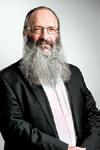
Iyunim p. 5), but that does not depend on the specific sin. In fact, most assume (see S’dei Chemed V, p. 341) that one can violate Torah-level lifnei iver for facilitating a Rabbinic prohibition, implying that lifnei iver is independent of the specific aveira, which goes well with the Yad Malachi’s approach.
It seems logical to me that an element of lifnei iver is violated at the act of facilitating, but that it is exacerbated when Shimon does the aveira and by its severity. This also fits well with many sources (further development is unfeasible here).

For a Din Torah in English or Hebrew contact: Eretz Hemdah–Gazit Rabbinical Court 077-215-8-215 • Fax: (02) 537-9626 beitdin@eretzhemdah.org


Rebbeca asks:
I’m having trouble getting clarity. Some people say they know exactly what they want but I don’t know where they are flexible. And, some people say they know what they want but it’s so vague that they could match with anyone and they can’t narrow down what they are looking for, what they don’t like or do like. I don’t know what to look for to make sure it’s a real match and not just something that looks good on paper.
Aleeza answers:
In the intricate dance of matchmaking, clarity is a crucial partner. Rebbeca, as you help others navigate their feelings about what they want in a partner, let’s break down the path to finding that clarity and help you understand where they are fixed and flexible. Here are some key points to consider:
1. Define Their Core Values: Start by identifying what truly matters to the person you’re trying to help. Is it honesty, ambition, spirituality, or family? By pinpointing these core values, you create a framework for understanding what someone needs in a partner. Values are non-negotiable; they serve as the foundation for a lasting relationship. However you may notice some people have very strong values while others seem to have less passion about their values. The more flexibility someone has the more you are able to be a little broader with matching them and don’t need to be as exact with values overlapping. Someone who is more detailed and specific about their values will likely accept fewer
suggestions and the ones they do accept, they will want you to be more specific when sharing details about why you think this match makes sense before they say yes.
2. List Deal-Breakers: Just as it’s important to know what someone wants, it’s equally crucial to know what someone doesn’t want. Help those you work with create a list of deal-breakers. This could include lifestyle choices, habits, or beliefs that they find incompatible. Knowing what someone can’t accept helps narrow your search for them. Again in this area sometimes someone will have strong deal breakers while others are easier to work with. The more flexibility they have the fewer deal breakers you have to avoid and the more freedom you have when setting them up. If someone has a lot or very specific deal breakers don’t try to suggest a match where there is a deal breaker. Or if you really feel you must make a match suggestion where there is a deal breaker be honest and say, I know you don’t want someone who is (insert deal breaker) however I’m still suggesting this match because (list 3 reasons you feel this match aligns) and I’m wondering if you’d consider this match and if this is truly a deal breaker for you. You’re questioning their deal breaker. But you’re acknowledging it at the same time which allows them to either double down and say no thank you, this is where I draw the line in the sand. Or they can reconsider and say it’s not a true deal breaker it’s just a strong preference and it’s ok to make the match. Your job is to hear
what they want and to navigate through the suggestion honestly and gracefully.
3. Understand Flexibility: Real relation ships thrive on compromise. While it’s essential to have a clear idea of a person’s must-haves, there should be areas where they are more open to flexibility in less crit ical areas. Ask your singles where they can bend without breaking. This openness can lead to a match suggestion you may have not thought of otherwise.
4. Seek Specificity: When helping your singles articulating what they want, avoid vague terms. Instead of saying, “I want some one kind,” help them specify what kindness looks like to them so you fully understand their definition of their terms. Does it mean they volunteer, listen attentively, or support your dreams? The more specific someone is, the easier it will be to recognize a genuine match. This is especially helpful with singles who have more flexibility and who don’t fully explain every need in detail. They will appreciate you helping them articulate what they want and need in a partner.





Clarity in what someone desires from a partner is a journey of discovery and reflection. By defining and understanding someone’s values, being specific, and remaining open, you can help make suggestions that are not only good on paper but also in person. May you understand others and find the clarity you need to make great match suggestions.
Founded in Israel in 2019 and led by Rav Rimon, Shagririm Balev - a social online matchmaking initiative - has taken the dating scene by storm. With over 10,000 candidates and 3,000 Ambassadors, in Israel and the US, Shagririm Balev is averaging a Wedding every 2 days!
A warm Torahcentered community for growth oriented families located in the heart of Beit Shemesh, led by Rav and Rebbetzin Krohn. Eden will be a community that supports the spiritual, educational, and social-emotional needs of every member. With our shared, unwavering commitment to Torah values and the core principles of Yishuv Eretz Yisrael, we look forward to building this kehilla together Led by Rav Beni and Rebbetzin Chani Krohn


2-5 bedroom luxury apartments
Only 7% down to secure your property
Project completed within 5 years
Located adjacent to the Sheinfeld neighborhood in Beit Shemesh
For more information:

Shoshi Friedman +972 52-624-4600 Scan Here




RABBI YOSEF GINSBERG REGIONAL DIRECTOR, NCSY ISRAEL
“The pure righteous do not complain of the dark, but increase the light; they do not complain of evil, but increase justice; they do not complain of heresy, but increase faith; they do not complain of ignorance, but increase wisdom.” – Rav Kook
In Beshalach we experience arguably the greatest miracle of all time, the splitting of the Red Sea. There were many miracles that occurred during that monumental event, from the actual splitting of the waters, the destruction of the Egyptian army behind them, and many more. But the miracle that stands out to me the most is from the Pasuk in Az Yashir, “And the Jewish people walked on dry land, within the sea.” What is the significance of this miracle? What was Hashem trying to teach us?
The great Rav Elimelech of Lizhensk tells us

Israeli and American Certified Psychiatrist
Nachum Edward Weissberg, MD
Fmr Clinical Assistant Professor, University of Maryland Medical School
For appointments, please call: 054-443-9895 or 050-550-0025
2/19 Sheshet Hayamim St. Jerusalem
of every Jews ability to be a Tzaddik, a righteous person. He says, although, that there are two types of Tzaddikim. First, there is the Tzaddik who recognizes the challenges he has and focuses on fighting them and defending himself against them. The second type of Tzaddik, recognizes those same challenges as an opportunity not only to defend himself, but to create and push forward.
Rav Elimelech says that dry land, lifeless sand, represents the challenges and dark times that come to a person. The waters represent life and movement. The first Tzaddik is still righteous, but Rav Elimech teaches us that the uniqueness of a Jew is that even when he’s on ‘dry land’ he is able to be ‘within the waters’.
As Jews in the Land of Israel we all have our challenges. The question is what we will do with them. Will we complain about the ‘dry land’, ‘the darkness’? Or rather, as Rav Kook says, increase the light, live ‘within the waters’. The choice is ours.

DANIELLA GOLDFARB 12TH GRADE, JERUSALEM
At the very beginning of Parshat Beshalach are the words:
“And Moshe took with him the bones of
Yosef because he had bound Bnei Yisrael with an oath”
Why was it so important for Moshe to take the bones of Yosef? Yosef had died many years earlier. Likely many Jews had died during that span and were buried in Egypt. The answer to this question can be found in the repetition of עיבשה עבשה, pledged an oath. In parshat Vayechi, Yosef asks to be buried in Israel before dying and states that by pledging to bury him in Israel, Hashem will remember Bnei Yisrael and bring them back to the Land that was promised to them. With the repetition of the words עיבשה עבשה, we are reminded of the importance of making a promise and keeping it.
Because Bnei Yisrael kept their promise to Yosef, Hashem freed them from slavery in Egypt. Similarly, we promised Hashem to follow his commandments, and in turn he has protected us and kept us throughout the generations. Moshe had to take Yosef’s bones because keeping an oath is an integral part of being part of Bnei Yisrael. It has allowed us to survive everything from slavery in Egypt through countless enemies throughout the generations.
Mature woman with medical backgroud wishes to keep an older woman company, sleep over in her house, do some healthy cooking and laundry for her.
References available
Fluent in English & Hebrew
Call Esther - 052-335-6139

